
12

Welcome to edition 12 of the Hot Stuff magazine!
In this issue you will find some great contributions by Skeme Richards (The Nostalgia King), Jason Armitage (Dr.J), Koe Rodriguez, KC The Funkaholic , Swifft Edits, Spankie Hazard, Wildstyle Guy, Oliver Way, Stuart Baker, Wild Life Archive and myself. When I started collecting at the end of the seventies I liked the futuristic covers with spaceships. I framed the the Kinsman Dazz cover and found out that it was made by Shusei Nagaoka who made great other covers too. So in this issue I made a selection of his work in a picture gallery. On the cover is also a part of the Munich Machine cover made by him. Cover illustration is taken from the bootleg guide made by me and Patrick Vogt. This year, we not only celebrate Hip-Hop’s big 50, but 40 years of Style Wars as well. Koe Rodriguez did a nice article about this anniversary and did a interview with Henry Chalfant.
For those who don’t know me yet, I have already collected many disco-related items, such as magazines, books, acetates and, of course, records! Like me, there are many other music lovers who have interesting stories to tell, know about the music’s history and have certain memorabilia.
This magazine includes a wide range of interesting articles on disco, jazz, rap, hip-hop, funk, house, rollerdisco and the graffiti & breakdancing culture. Furthermore, you will find vintage advertisements and magazine articles mainly from the 1970’s to the 1990’s.
Enjoy!
Groetjes, Discopatrick
3
EDITOR’S INTRODUCTION
HOT STUFF
Editor Discopatrick
dE sign - Layout
Cov E r iLL ustration
Contributing
Writ E rs
Discopatrick
Patrick Vogt
Discopatrick
Jason Armitage (Dr. J)
KC The Funkaholic
Koe Rodriguez
Marcus Patty
Niels Hoeke
Oliver Way
Skeme Richards
Stuart Baker
Swifft Edits
Spankie Hazard
Wildstyle Guy
Wild Life Archive
© Discopatrick 2023
CONTENTS 3 EDITOR’S INTRODUCTION FROM H ERE TO FAME by Koe Rodriguez 6 16 GO GO MUSIC ? WHAT IS GO GO MUSIC by KC The Funkaholic D IGGING D EEPER WITH THE PRESERVATION PROJECT by S keme Richards (T he N ostalgia K ing) 30 34 JAPANESE RECORD ART: A COLLECTOR’S FEAST O F FUN, FUNK y, AND B Iz ARRE by S pankie H azard And Swifft Edits (Sedgwick Records) M IKE G (J UNGLE BROTHERS) I NTERVIEW by Jason A rmitage (DR. J) 42 46 AFFORDABLE FUNK By Niels Hoeke And Marcus Patty Brought to you by Facts On Wax 11 FAvORi TE T RACKs O F OL iv ER WAy 50 54 vi NTAGE s TUDi O 54 MEMORAB i L iA Collection Of Wild Life Archive yO ! BOOMBOX by Stuart Baker SOUL JA zz RECORDS 64 72 WANDERi NG i N WONDERLAND by Guillaume AKA W ildstyle Guy I ONLy HAVE A BAD PICTURE by D utch G rafitti L ibrary 78 82 v i NTAGE ART i CLE TWO sis TERs B-B Oys BEWARE SHUSEI NAGAOKA Cover Art 86 94 GAyLE ADAMS PRESS KIT PRESS KIT PICTURES 96
From Here To Fame
KOE RODRIGUEZ
James “Koe” Rodriguez is a recognized visual artist, Hip-Hop scholar and an entrepreneur. His work has appeared in published books, domestic and international magazines, documentary films, group photo exhibitions and on lifestyle apparel. Over the years he has interviewed and captured such notables as: The Cold Crush Brothers, Rakim, LL Cool J; Jay-z, KRS, Wu-Tang Clan; Kenny Dope, the TATS CRU and Sal Abbatiello of the Disco Fever.
In 2005, Rodriguez curated his first group photo exhibition in Brooklyn, New york entitled ‘3 The Hard Way.’ The exhibition featured the works of renowned New york photographers, Joe Conzo, Ernie Paniccioli and Jamel Shabazz, and represented the first time all three photographers exhibited their timeless works under one roof. That year, Rodriguez would go on to pen a powerful afterword in Shabazz’s acclaimed book ‘A Time Before Crack’ before heading to Paris, France to helppromote the seminal sneaker documen -
tary, ‘Just For Kicks,’ in which he co-starred.
Rodriguez is the Owner / Founder of Koe Rodriguez LLC, a sole proprietorship specializing in creative representation and media licensing. The company represents a number of renowned clients, such as: Martha Cooper, Ernie Paniccioli, Joe Conzo; Jamel Shabazz, Henry Chalfant and Thirstin Howl the 3rd. In conjunction with his clients, Rodriguez has worked on a number of international lifestyle projects with Adidas, Montana Cans, Sony; Nike, TriStar Pictures, Puma; ESPN+, Beyond The Streets and the Rock & Roll Hall of Fame, to name a few. He is the owner / founder of the curatorial apparel and art brand ATW (www.atwcrew.com).
The following pages feature an interview Koe did with legendary documentarian Henry Chalfant celebrating 40 years of the film Style Wars.

6
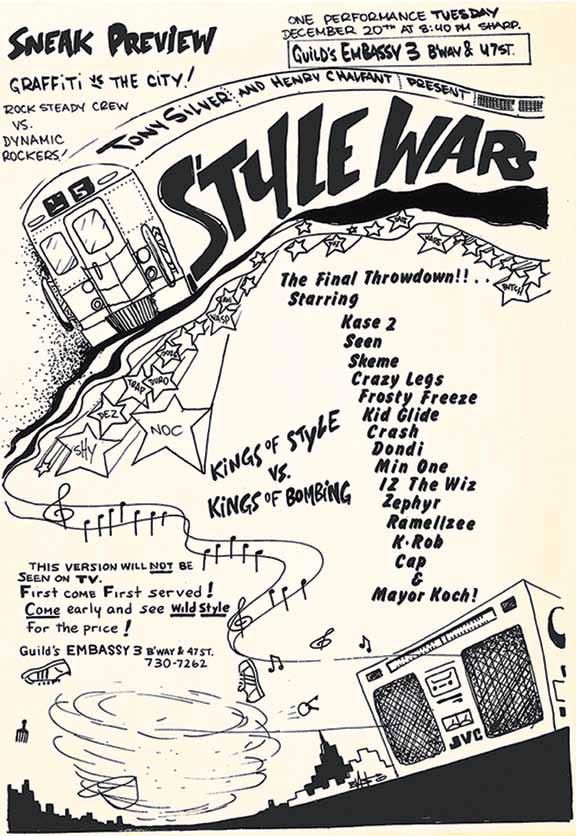
7
Style Wars Embassy 3 flyer by WISE
I’ve known the great Henry Chalfant for over 3 decades. It seems like yesterday that I was a teen trekking from Jersey City to his studio at 64 Grand Street in Manhattan. Hallowed ground by the late 1980s, Henry’s spot was an official graffiti hub that many near and far made pilgrimages to. It was in that legendary loft that I saw (in awe) his big portfolios of subway graffiti. Some of the masterpieces would be immortalized in his and Martha’s Cooper’s book Subway Art and in the seminal film Style Wars. It was also at Henry’s spot where I met many OG writers like my Boricua brothers, Lee Quiñones and Cope 2; The Video Graf gang: Cameraman Carl, Spin and Nic1; and Mr. Style Wars himself, Noc 167. Aside from Henry’s many achievements, including photographer, filmmaker, author, and sculptor, his humility, generosity, and unwavering support and contribution to Hip-Hop culture is unmatched. He is simply in a class by himself.
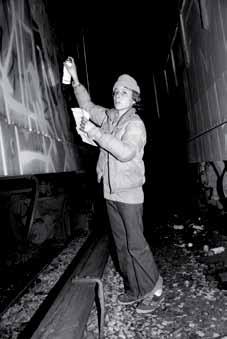
The former Pittsburgher has helped create books and films that are considered holy grails in Hip-Hop. In 1983, Henry and Director Tony Silver via PBS (Public Broadcasting Service) unleashed the Hip-Hop Kraken, Style Wars, on the country. Bar none, the award-winning film is considered the definitive (and arguably the best) documentary on early Hip-Hop culture. This year, we not only celebrate Hip-Hop’s big 50, but 40 years of Style Wars as well. In the spirit of these momentous occasions, I reached out to my man Henry C to discuss the film that helped introduce Hip-Hop to the masses and fuel a cultural revolution. Henry not only shared candid thoughts on his famous flick, but he also opened up the Style Wars vault and allowed me to share some great visuals to accompany this story as well. Enjoy!
KOE: 2023 marks 40 years since Style Wars was released. Looking back, did you think the film would have such a huge international impact and stand the test of time?
HE nry C: When we completed the film in 1983, we had no idea about the future and already there were other takes on the culture, notably Wild Style and Beat Street. We were aware that we were on to something exciting and important. I couldn’t imagine the global reach until maybe about a year later when I started to get letters from kids in other parts of the country and even the world. These letters
were so enthusiastic and grateful, and I began to understand that we had struck a vein of powerful emotion out there in the world.
KOE: Back in ’82 when you and Director Tony Silver were making Style Wars, were there any conflicting feelings about the light you guys were about to shine on this new subculture and how the film was ultimately going to be received?
HE nry C: We understood that shining a light on the subculture was going to change it in unpredictable ways. For better or worse, we had no idea. As a photographer I had already seen changes. Among writers, there was an important element of peer teaching, a kind of apprenticeship that was diminished by the ease with which people could copy and learn style from photos. But mostly we were excited to be showing something so amazing to the world.
KOE: What were some of the challenges you, Tony and the rest of the crew faced making Style Wars? Was production ever in jeopardy of being terminated?
HE nry C: It was a challenge to get funding for a film about an illegal activity which was hated by a lot of people, especially people in positions of power. Initially
8
M in on E going for his in n ew Lots
we were turned down for a grant from the National Endowment for the Humanities due to the opposition of the right-wing chairman, William Bennett. Our first funders were Channel 4 in Britain. But Mayor Koch, to his credit, got on board, and his ok allowed us to work with the Transit and police departments and get limited access to the tunnels and yards. We had to promise we wouldn’t shoot any illegal painting. When Cap on his own initiative painted a couple of throw ups in the 180th St yard, we filmed it. When we interviewed Ravitch, the MTA chairman, we told him about it on camera and asked him to say he wouldn’t arrest anybody. In spite of the MTA ban, Tony and I still wanted to shoot an illegal painting session and we planned an incursion into the 6 yard with Seen. We entered through a hole in the fence with all our equipment and crew, and waited for things to be quiet, but there was such a police presence cruising around the yard, that we had to abort. Back in the day with film, if you wanted quality you needed a lot of equipment and crew. It was hard to be clandestine;
not at all like shooting video today. Anyway, had we been caught they would have killed the project and our access to the yards that they had agreed to.
KOE: Wow! Were there any writers or Bboys who were difficult to work with making Style Wars?
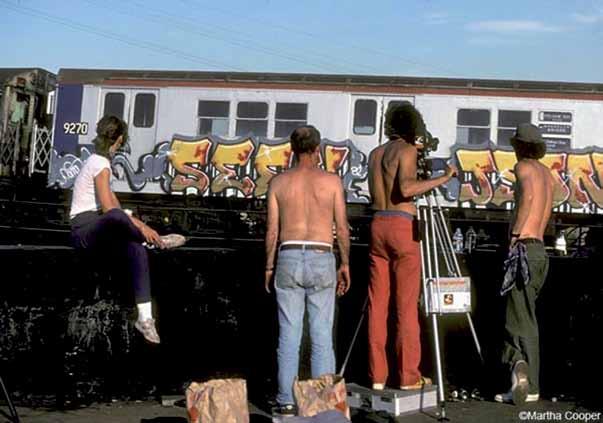
HE nry C: Everybody was cool while we were making the film.
KOE: 40 years later, we’ve lost so many stars of Style Wars, including: Shy 147, Iz The Wiz, Dondi; Tony Silver, Frosty Freeze, Rammellzee; Skeme’s mother Barbara Andalcio and most recently Dez aka DJ Kay Slay. Is there a feeling of happiness knowing that their legacies will live on through the film?
HE nry C: Nothing can replace the wonderful, talented, vital people who participated in making Style Wars. The list goes on. We need to mention Kippy Dee (Rasean), Take One, Ty Fly, and the two amazing camera men, Burleigh Wartes and
9
style Wars production crew shooting a s EE n & J son wholecar
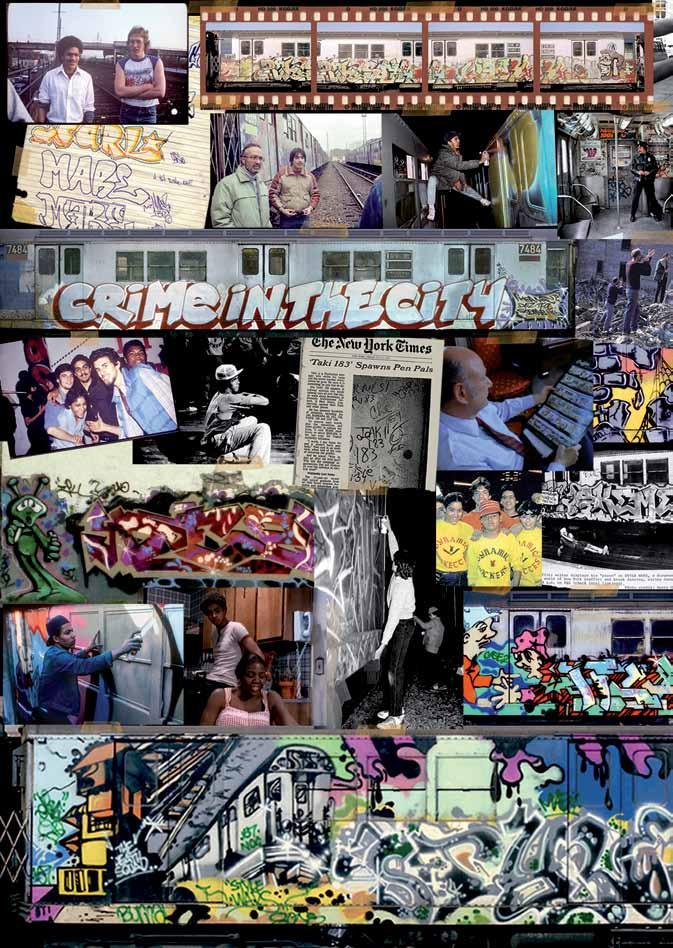
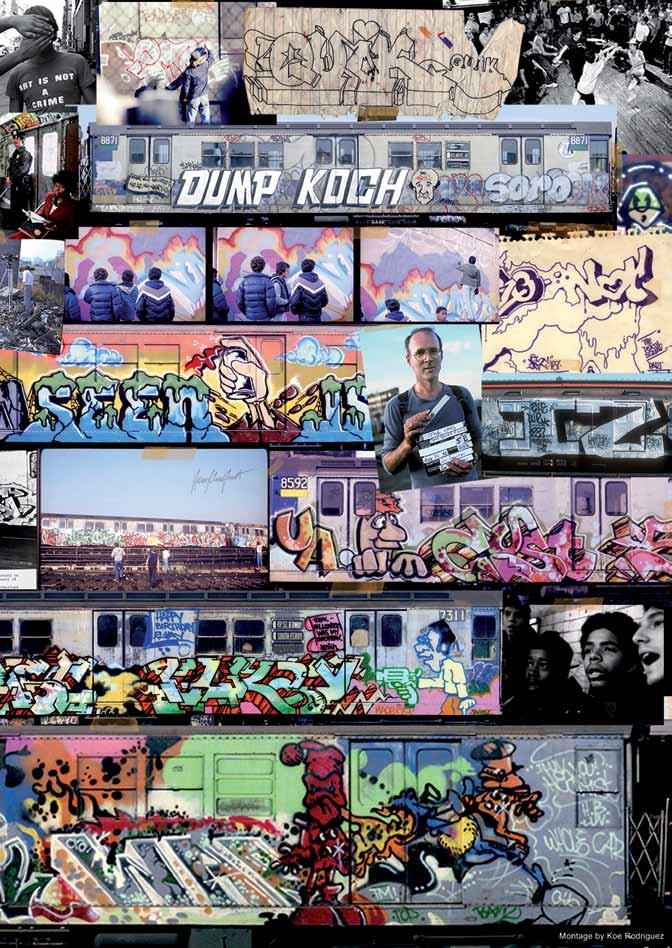
style Wars
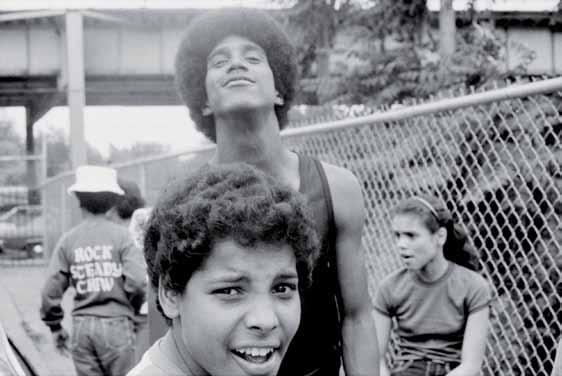

12
d ynamic rockers outtake from
F rosty F r EEZE & taKE on E rock steady Crew (r i .P.) outtake from style Wars
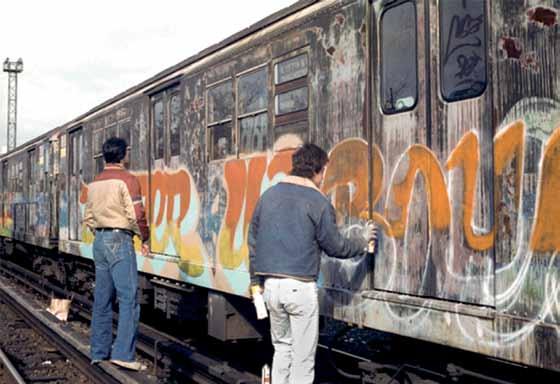

13
traP & d EZ (r i .P.) outtake from style Wars
dustE r & s EE n ua rock the 6 yard
Jim Szalapski. I am forever grateful that they all shared their talent with us, and happy that their work and participation will shine and be appreciated forever.
KOE: Although the MTA finally won its battle against subway graffiti, they didn’t win the war. Graffiti and street art are bigger than ever. Do you think Style Wars played a part in this?
HENRY C: Style Wars had a role in sparking Graffiti and Street Art and the idea of creating art in public spaces got a big boost. There are cities around the world who promote “their” street art as tourist destinations.
KOE: 1984 was such a seminal year in HipHop culture. Beat Street and Breakin’ were released in theatres; Style Wars debuted on PBS Ch. 13; Graffiti Rock -- a name you actually coined -- premiered on Channel 5 in New York; the New York City Breakers performed for Ronald Reagan during the Kennedy Center Honors on CBS and you and photographer Martha Cooper release what is now considered “The bible of Graffiti,” Subway Art. Was there a feeling that Hip-Hop had finally arrived and that you and your work would receive its due?

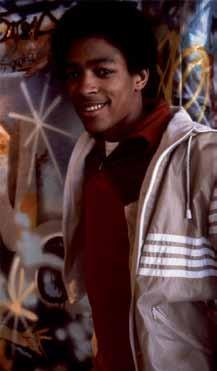
HENRY C: There was a lot of attention in 1984; PBS broadcasts across the country, but there weren’t any major theatrical screenings which we had hoped for. Style Wars found its public in schools, museums, Hip-Hop festivals, and conventions. Subsequently, it has become something of a cult classic. I am constantly amazed by meeting people who were so strongly in -
fluenced by the film, who can recite all the dialogue in it and talk about how it transformed their lives.
KOE: This year Hip-Hop culture turns 50. Did you ever think we’d make it this far?
HENRY C: Hip-Hop culture has had a transformative role in popular culture and political empowerment around the world for marginalized people. I saw the potential, but never imagined it would spread so widely.
14
Cras H outline
Mr. style Wars, no C 167
KOE: Please give us one of your favorite moments during the making of Style Wars.
HE nry C: It’s gotta be the shoot in Skeme’s kitchen. It was delightful to watch the conversation between mother and son unfold, to watch Barbara Andalcio’s skepticism and ironic humor; Burleigh Wartes’ incredible timing as his camera follows the conversation from one point of view to another. After the shoot, Barbara told me that she remembered being 16 years old, and that she used to wait till her parents were asleep, to sneak out the window and down the fire escape to go dancing at 2 in the morning.
KOE: Style Wars and Subway Art birthed no fewer than two generations of Graffiti and street artists, including yours truly. How do you want people to remember your legacy and contribution to Hip-Hop culture?
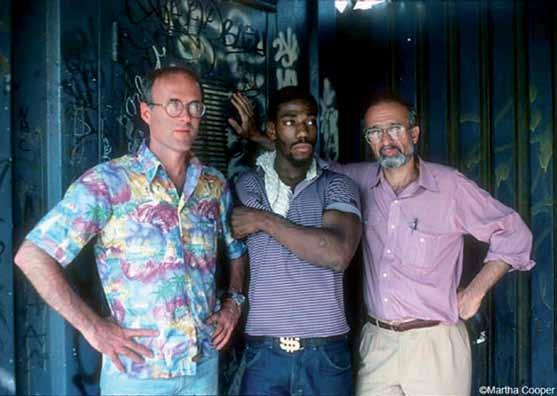
HE nry C: The most important people in the culture are the artists, the true cre -
ators. Without them there is nothing. I want to be remembered as one of the people who helped to amplify the voices of those two generations and the many that will follow, of people who hopefully will never again be silenced.
KOE: Thank you for your time and friendship, Henry!
HE nry C: I, too, deeply appreciate your friendship and all of our collaborations.
Words © 2023 James “Koe” Rodriguez. Photos © Henry Chalfant and © Martha Cooper, respectively.
15
Henry Chalfant, Cas E 2 (r i .P.) and d irector tony s ilver (r i .P.) outtake from style Wars.
Go Go music ?
WHaT is Go Go m usic
by KC THE FUNK aHOlIC
KC the Funkaholic, DJ, promotor, label owner and collector and has been working at the music venue Paradiso sinds 1995. Go-Go changed his life after seeing Trouble Funk and Chuck Brown on many occasions in the eighties in London and at the Paradiso in Amsterdam.
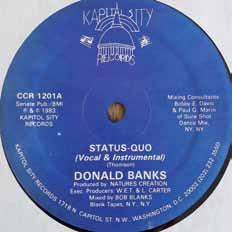
Finding Go-Go records was difficult back in the days. Only few copies would find its way to Amsterdam. The employees of a record shop in Amsterdam would, as he stepped into the shop, always start singing the iconic theme song of Mr Ed, a TV show about a talking horse.. They changed the lyric’s to: the famous Mr T.E.D.D as he was always asking if they got any new releases on the Trouble Funk label.
Go-go music is a unique style of music that originated in Washington, D.C in the eighties.
Go-go has its roots in a variety of African American musical styles, including funk, hiphop, soul, and R&B.
It is characterized by a highly energetic but slow rhythmic sound, with heavy use of percussion instruments such as congas, cowbells, and timbales. The repetitive rhythms are a key characteristic of go-go music, and the musicians who play in go-go bands are highly skilled at creating and maintaining those rhythms. In a go-go band, there may be multiple percussionists playing together to create a complex, layered rhythm. The drummer and bassist also play a crucial role in maintaining the groove and driving the beat forward.
The bands are led by a charismatic frontman or frontwoman, help to create a sense of unity and interaction between the musicians and the audience. The audience is referred as an extra band member and performances usually start with a call-and-response a so called Roll Call an introduction between band and crowd. Overall, go-go music is a collaborative effort that requires a high level of skill, coordination, and improvisation from everyone involved this the ultimate
goal creating a “pocket”. The term “the pocket” or “Sho Nuff Crankin” is used to describe the sweet spot where the drums, bass, and other percussion instruments all lock in together to create a solid, consistent rhythm , tightly locked-in, that keeps the music moving forward. It is the foundation of the music, and the goal is to create a rhythm that is so tight and infectious that it makes people want to dance. When the band is in the pocket, the music feels effortless and natural. Achieving and maintaining the pocket is a mark of a skilled go-go musician and a hallmark of the genre.
16
trouble Funk Live at Paradiso ( 3 october 1986 )
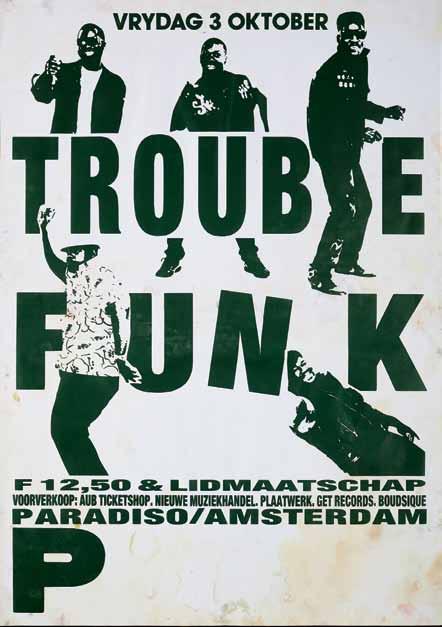
The golden age of Go-Go was in the 1980s, with endless list of bands performing and competing for fame and fortune in the DC area. Four bands stood out: Trouble Funk, the Godfather of Go-Go Chuck Brown who gave birth to the sound, EU, and Rare Essence, each with their own unique style and signature sound. Following the political riot of the Pentagon Papers, Go-Go remained one of Washington’s best-kept secrets. However, there was one man on a mission to change that: Maxx Kidd. He
had a vision. As hip-hop was spreading worldwide and house music was gaining popularity, it was time for Go-Go to make its mark. Once people experienced “the pocket” - the irresistible groove of GoGo music - they would be infected by its rhythm.
Maxx Kidd believed that the world would become a slave to the Go-Go rhythm, just as other genres had captured global attention.
17
This is a vintage article from the East Village Eye from March 1985.
By Winston C. Robinson Jr. Photo’s by John Eder.
Trouble Funk are about to drop bombs and Go-Go is about to blow.
Go-Go Funk is the fast track to a dance attack.
“Street Music from the nation’s capital. It’s non-electronic with a very heavy African beat” explains Maxx Kidd, acknowledged patriarch of the D.C scene and president of TTED Records. Kidd likes to compare the spread of Go-Go in D.C. to the way reggae caught afire and united Jamaica.
If a few white groups from Washington D.C. have received some national attention, the music of inner-city blacks-80% of the population-has remained relatively unknown beyond the District line-until now. Washington stands poised ready to break onto the national scene. One reason Go-Go has remained underground is that it is first and foremost a live sound. As opposed to hip-hop or scratch, which can be recorded on something as simple as a four-track studio, the improvised horn charts and percussion jams which play an integral part of the Go-Go sound cannot be captured so easily on vinyl.
Go-Go funk has yet to catch the ear of the trendsetters in New york, and Los Angeles. That’s not the case in England, where the insatiable appetite for something new must be appeased on at least a weekly basis. Go-Go funk is the hottest thing to hit London since Run-D.M.C says Jay Strongman, London D.J. and correspondent for The Face. On his last visit to new york, Strongman had to scour small record shops in the Bronx for Trouble Funk Discs.
For everyone else, the process should be easier. A compilation of Go-Go bands will soon be released on Island records. It will contain mostly vintage Go-Go, featuring prime cuts from Trouble Funk, Chuck Brown, Hot Cold Sweat, Slim and the GoGo’s only all all-female band, yuggie, whose song, “Go-Go Mania” sets up the whole LP. Island will also distribute some of TTED’s releases, beginning with two 12-inches, one by Mass Extinction and another by Reds and the Boys.
“Can you imagine what music would be without rhythm ?” jokes Taylor Reed, Trouble Funks trumpet player. He aims the question at his colleagues, brother and guitarist Robert Reed, bassist Tony Fisher and keyboard player James Avery. Laughter greets his remark, part of the clowning-around that Trouble Funk relies on to keep sane during the grueling recording sessions at New york’s Right Track Studio.
Maxx Kidd, manager of the band and guru of the Go-Go funk movement, has been shuttling the group from Howard Johnson’s to the recording studio all week.
On this particular occasion, a photo session for the E yE, he seems to be giving the band members a chance to blow off steam. Big Al, who is both Trouble Funk confidante and bodyguard, also takes his turn in front of the cameras. He awkwardly tries to ignore the jibes and catcalls from the band.
Tracks from Trouble’s tape sessions hammer away in the background, the music so fresh that the vocal tracks have yet to be added. The band begins to put their own words to the bare loops as one yells out a familiar Trouble Funk chant: “One mo’time yáll, we’re still smoking on the Go-Go scene!”. Are they referring to the same Go-Go Smokey Robinson sang about years ago ?. The band members respond to my question almost in unison: Go-Go means dance ! It’s like saying, “Let’s go to the show”. Let’s go to the GoGo, because Go-Go means non stop music. Maxx Kidd directs the Reed Brothers in front of the camera as he gives a more thoughtful definition of the Go-Go scene. “Go-Go is a raw sound, “he say’s “ a natural vibe based on a lot of feelings, voice, chants, call and response. “Kidd should know. His records label, TTED-it stands for Tolerance, Trust, Eternal Dedication and Determination-has signed up virtually all the Go-Go groups, like Chuck Brown & The Soul Searchers, Snap and the Go-Go All Stars. Kidd also manages these bands. He began working with Trouble Funk after they fell out with the folks at Sugar Hill Records.
Trouble Funk claims James Brown and George Clinton as their major influences, besides, of course Chuck Brown who set
18
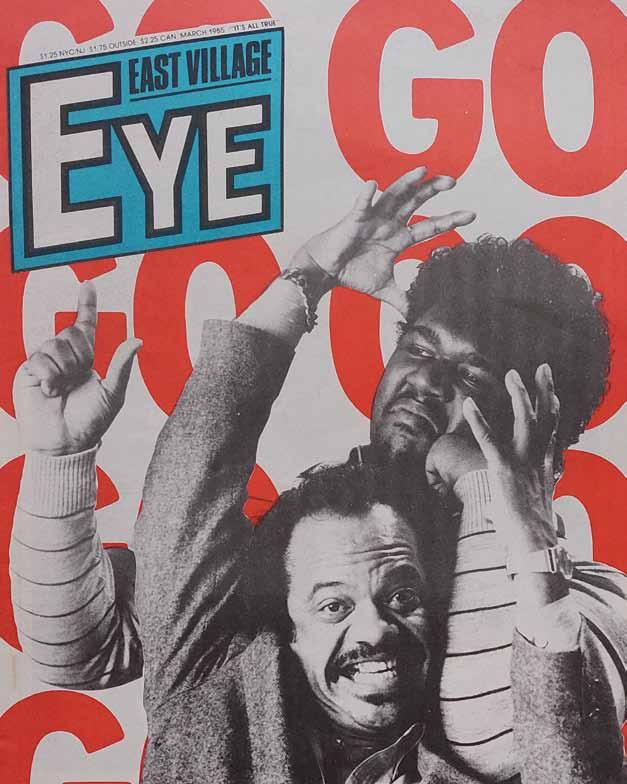
19
the show on the road back in the early ‘70s. When Chuck Brown & The Soul Searchers hit the road, Trouble became the house band at the Le -Barrons’s. That’s Browns favorite spot to gig, and the only place in D.C. where you can get a $2 fish fillet and a dose of Go-Go funk
“Go-Go music was born and bred in D.C.”says Kidd. “I think it’s something that’s been in the bowels of this city for the past 30 years. It’s been naturally processed, and now it’s here. It’s arrived”. Because of Go-Go’s interdependence on live audience participation, Kidd thinks it’s almost impossible to capture the GoGo sound on record. “The music belongs to the people,” he continues. “Now it’s grown into something that America and the world can respect. When you come to the Go-Go, you release all your tensions and just have a good time.”
With all the attention the Go-Go scene has been getting of late Kidd is a very busy man. As the phot session winds down, he suggests we all go back to HoJo’s so that he can finally take a breather. Once in his room, Kidd collapses in a chair. yet he still manages to talk non stop between gulps of Hennessey. It is obvious the Go-Go business does not stop inside the motor lodge. Big Al, meanwhile, is busy taking calls, while the band readies itself for another all night recording session in a room down the hall.
Maxx makes a few calls himself, making sure the per diems arrive, scheduling the limo to get Trouble Funk to the airport in the morning, and ordering up six steak dinners before hitting the studio. The steaks are a reward he promised the boys earlier if they behaved during the photo shoot. I ask him where he thinks Go-Go is going from here. : I’ll give it four years,” he says matter-of-factly. “Then it will turn into something else. It’ll still be Go-Go, but you’ll never get the total effect of Go-Go until you come down to D.C. “
Maxx smiles: “Remember, if it don’t make you dance, it ain’t Go-Go.”
Gordy of Go-Go. He was a legendary figure in the history of the genre. He was a multifaceted talent, serving as a musician, bandleader, producer, and, most of all, an ambassador for the style, striving to make Go-Go a worldwide phenomenon. Maxx was known for his tenacity in getting songs played on the radio, often resorting to unorthodox, but effective, methods such as bringing a baseball bat to the studio. If he believed in something he came in with guns blazing,. The legendary stories are endless. During the release party of Chuck Brown’s We need some money he threw hundreds of dollar bills in the audience. He was a promoter who believed in the D.C. sound and worked tirelessly to get it exposed, making both friends and enemies along the way. However, like many music industry figures like Berry Gordy, Maxx Kidd engaged in unethical practices, taking advantage of young, inexperienced artists.
In 1985, Maxx Kidd successfully convinced Chris Blackwell, the founder of Island Records, of the value and potential of gogo music. Blackwell became interested in the genre after hearing a Chuck Brown song and subsequently took Kidd’s advice to witness a multi-act go-go performance at the Washington Coliseum. This experience led Island Records to release a compilation album titled “Go-Go Crankin’: Paint the White House Black,” and

What happend after this interview in 1985?
Maxx Kidd worked hard to promote the sound and referred himself as the Berry
the phenomenal live in London album by Trouble Funk. Island’s distribution put GoGo on the map worldwide. In 1986, Kidd served as the associate producer for the
20
film “Good to Go,” starring Art Garfunkel. The movie, was a project that Island Records hoped would help propel go-go into the mainstream music scene and world domination.
Despite his flaws, Maxx Kidd’s contributions to Go-Go music were significant. He helped shape the sound of the genre and played a vital role in establishing Go-Go as a vital part of Washington, D.C.’s cultural fabric and for his endless efforts, he was loved by the community as Berry Gordy was loved in Detroit.
But Maxx was not the only one in love with Go-Go.
More people fell in love with the sound and other great things happend in the golden years that should have lead to world domination.
The band EU (Experience Unlimited) released their first spiritual jazz funk album “Free yourself” on the beautiful Black Fire Records in 1977, before transitioning to the GoGo genre with their subsequent albums. EU gained wider recognition and commercial success with their hit song “Da Butt” , which was featured on the soundtrack of Spike Lee’s film “School Daze” in 1988. “Da Butt” became a crossover hit and reached No. 35 on the Billboard Hot 100 chart. EU also collaborated with Salt-N-Pepa on their hit single “Shake your Thang”, which peaked at No. 40 on the Billboard Hot 100 chart in 1988.
Trouble Funk’s first tour to London and Europe marked a significant milestone in their career and played a crucial role in introducing the go-go sound to international audiences. The band’s energetic live performances and infectious rhythms quickly captivated audiences in London and across Europe. Their unique blend of funk, soul, and percussion-driven go-go music created a vibrant and engaging live experience .

The tour helped to establish Trouble Funk as ambassadors of go-go music outside
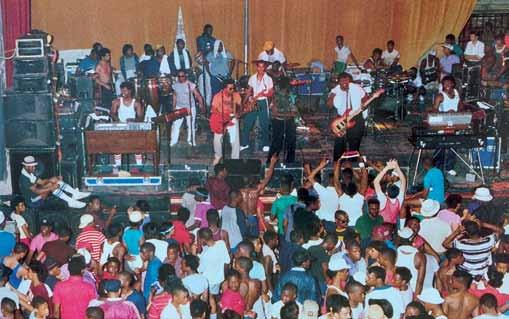
21
trouble Funk Live
21
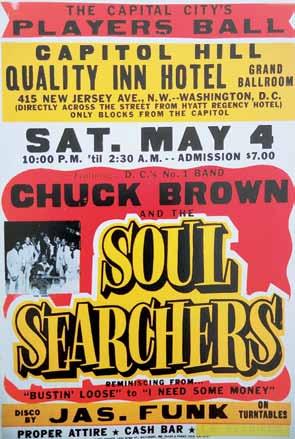
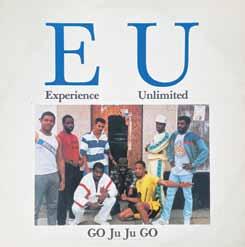

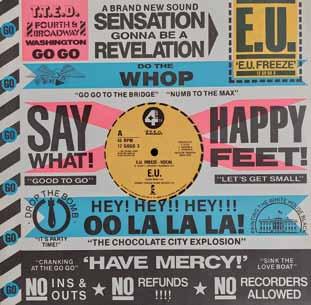 trouble Funk
trouble Funk
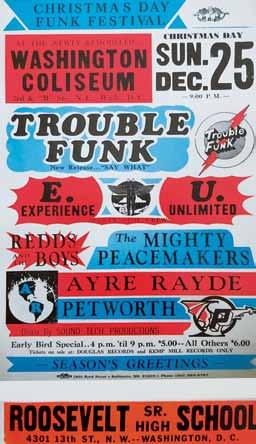

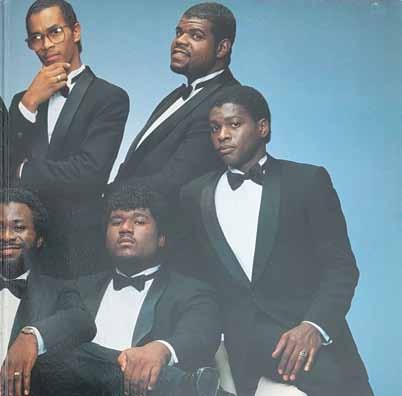

of the United States and contributed to the genre’s international recognition. It allowed them to showcase their talent and spread the infectious energy of go-go music to new audiences, creating a strong following in London and other European cities.
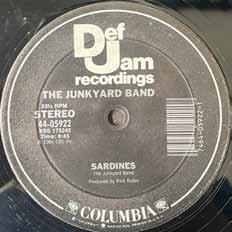
Chuck Brown, the Godfather of Go-Go, extended his musical influence beyond Washington, D.C., and embarked on successful tours in Europe. His Go-Go more
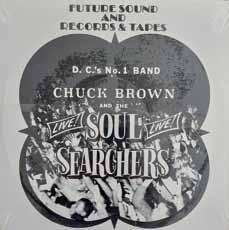
Rick Rubin from DefJam records fell in love with the style.
Rick Rubin, the renowned producer and co-founder of Def Jam Records, became enamored with the go-go style. Junkyard Band captured Rick Rubin’s attention during their performance at the iconic New york City nightclub, the Peppermint Lounge, in the mid-1980s. Rubin was deeply impressed by their high-energy performance and distinctive sound, which seamlessly blended elements of go-go and hip-hop. Consequently, he signed the band to his label, Def Jam Recordings, and took on the role of producing their first 12-inch single, “Sardines.” Rubin incorporated go-go samples into se -
jazzy swing captivated audiences across the continent. From intimate venues to larger stages, Chuck Brown brought the spirit of Go-Go to European cities, sharing the vibrant sound and culture of the genre with new audiences. Chuck Brown & The Soul Searchers’ European tours brought them international recognition, and as a testament to their captivating live performances, a live album titled “Chuck Brown & The Soul Searchers – Live ‘87” was released on the UK label Rhythm King.
Little Benny was a highly influential figure in the go-go music scene in Washington, D.C. He was a talented musician and bandleader, known for his skills on the trumpet and his dynamic stage presence. Little Benny started his career in music as a member of the legendary go-go band Rare Essence, but later formed his own band, Little Benny and the Masters and scored a modest world hit with the song Who comes to boogie.
veral tracks, such as LL Cool J’s “Rock the Bells,” Beastie Boys’ “The New Style,” and Jay z’s “99 Problems,” where he skillfully integrated Wilson Pickett’s “Engine Number 9” to create a go-go-inspired feel.
Grace Jones - Slave to the rhythm
The biggest worldwide Go-Go hit was “Slave to the Rhythm,” produced by Trevor Horn, who had no problem in bringing Go-Go to the mainstream. The song sold one million singles worldwide, reaching its peak at number 12 in the UK and topping the US Billboard Hot Dance Club Play chart. Interestingly, the song was released on Chris Blackwell’s Island Records, which may not be a coincidence. While Trouble Funk may not have received the recognition they deserved, if you exa -
24
mine the credits, the band members are mentioned, highlighting their contribution to the song
Fast forward , nearly 40 years later.What ever happend to Go-Go.? Why didn’t world domination take place?
To penetrate the mainstream, Go-Go music faced several challenges. How can you translate the Go-Go sound to a record or create a Go-Go hit?
The only authentic way to record Go-Go is live. That’s what Go-Go is all about; it must be recorded live. Even if artists recorded music in the studio, they still needed a crowd! And to be honest , when do you ever listen to a live recording at home? It’s more about the live experience. Artists were pushed to create Go-Go pop hits. The world considers EU’s “Da Butt” a Go-Go song, but in Washington, it wasn’t. It was an R&B song with Go-Go elements. Similarly, “Bustin’ Loose” was considered a funk record.
wasn’t feasible in 1985, it certainly isn’t in the post-COVID era.
Despite its popularity in the region and being used by Beyonce, Jill Scott and other artists, Go-Go music has remained relatively unknown outside of the D.C. area, making it a uniquely local phenomenon.
Go-Go is still live and kicking and it has gained official recognition as a cultural heritage of Washington, D.C. In 2020, the D.C. Council passed the “Go-Go Music Official Music of the District of Columbia Designation Act,” which declared Go-Go as the official music genre of the city. This recognition acknowledges the significant contribution of Go-Go music to the cultural identity and history of Washington, D.C. It solidifies Go-Go’s importance and ensures its preservation and celebration for future generations.
some of my go- go golden year favorites :
rare Essence - Live at the b reeze’s Metro Club.”
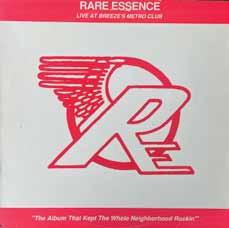
When it comes to Go-Go music, it can be divided into two categories: live recor-
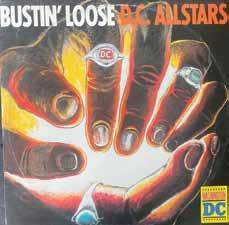
Dealing with record companies didn’t make sense either. Artists weren’t getting paid while selling massive amount of tapes of their live shows on the streets. Cassettes and live performances formed a major part of their income. Why risk your reputation by selling out with a song that wasn’t embraced by your own community? Instead, why not focus on touring and building your reputation as a live band? However, touring required hits, and big bands cost significant money, including expenses for hotels, transportation, and food. If it
dings and studio recordings. Many incredible live performances have been captured on vinyl, showcasing the raw energy and infectious spirit of the genre. Personally, I hold a special place in my heart for “Trouble Funk Live in London” and the live recordings of Chuck Brown. I had the opportunity to witness their electrifying performances whenever they played in Amsterdam or London, as I was a devoted
25 25
Go-Go enthusiast and groupie.
There’s nothing quite like experiencing the energy and excitement of a Go-Go concert firsthand.
As a promoter of live music at Amsterdam’s Paradiso venue, I’ve had the privilege of booking and witnessing legendary artists from Prince to D’Angelo. However, in my opinion, nothing surpasses the thrill of a live Go-Go band. If I were to choose one standout live album, it would have to be “Rare Essence - Live at the Breeze’s Metro Club,” with its remarkable Roll Call that goes on for more than 10 minutes. This record has seen plenty of mileage on my turntable, bringing joy with every play.
D.E.T.T and T.T.E.D label
In 1980, go-go band Trouble Funk self-released their “E Flat Boogie” on D.E.T.T, Trouble Funk’s own label

D.E.T.T stood for Dyke, Edwards, Taylor and Tony, Trouble Funks band members. Maxx was trying to take over D.E.T.T but Trouble Funk would not let him.
So since he couldn’t control D.E.T.T, he released his own label in 1983 riding the wave of the succes of D.E.T.T using the artwork and flipping the name to T.T.E.D.
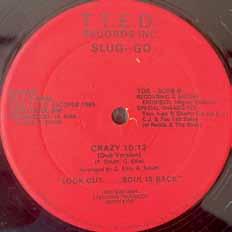
T.T.E.D. stood for Tolerance, Trust, Eternal dedication, and Determination. Another smart but blunt business move by Maxx Kidd.
My favorite DET.T- So many bangers , to choose one is impossible but Hot Cold Sweat - Meet me at the Go-Go still does it for me till this day.
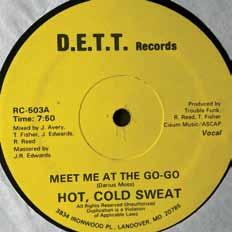
The hit song “Pump Me Up” by Trouble Funk saw releases on various labels. Initially, it was released on their own label, Trouble Funk Records. However, as the song gained immense popularity, they faced challenges meeting the high demand due to limited pressing capabilities. To overcome this, they turned to Jamtu Records, a label owned by Henry Moore, which had better distribution power. Adding to the confusion, the records were sold in D.E.T.T sleeves.
My favorite TTED- Slug and Go- Crazy
Although “Pump Me Up” was selling in significant numbers, the band didn’t receive proper compensation. Frustrated with the situation, they sought a better deal. Unfortunately, things took a turn for the worse when they signed with Sugar Hill Records.
26
Trouble Funk -Super Grit
While the label provided national recognition, it failed to deliver on financial compensation. Furthermore, the contract restricted the band from recording under the name Trouble Funk for a certain period. Consequently, they resorted to recording under different names such as Tilt, Slim, and Hot Cold Sweat as a means to work around the contractual limitations.
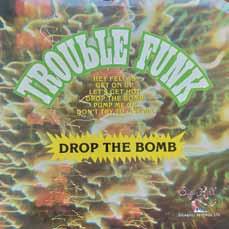
The Jamtu release of “Pump Me Up” also features one of my favorite Trouble Funk songs, “Super Grit.” Apparently, “Super Grit” was a DC dance where participants had to make an intentionally ugly face while bobbing their heads to the groove.
Donald Banks Status Quo
Stand out track on the Good to Go soundtrack. The social critical lyric’s are still relevant today.
These Rеaganomics are killin’ my stomach I feel just like I’ve got to vomit you votеd for Reagan, and you voted for Bush
Now we all got to take a look
Rare Essence - Body Moves
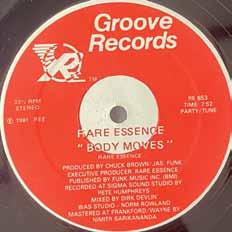
More funky disco boogie driven Go-Go song. Still play this in my sets.
Icee Hott - Hollar at me
Interesting as this song was released on the US mayor label Manhattan EMI that had connections with Island. So no surprise there.
EU the Butt was also released on the same label but the attempts by mayor lables to embrace Go-Go and push the sound where scares.
This is the only record Icee Hott ever released so why did the mayor choose this band ? Maybe for the simple fact that it’s an incredible banger. Straight up Go-Go funk explosion.
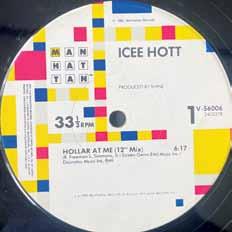
Mass Extension - Fun
Mass Extension, another tight band from DC. Happy Feet was their hit but Fun for me is special. Not straight hop Go-Go , it has more of a a boogie feel. From the 1990’s on
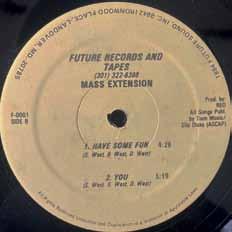
27
they have also been active as producers and served as backing band for James Brown. That’s how tight they were.
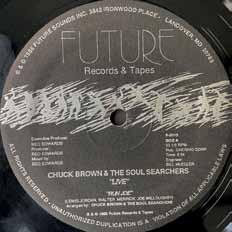
Jim Bennett and the New Directions - If you
can’t beat em Jim Bennett was released on another Washington based label that has to be mentioned, Future Record and Tapes. A powerhouse that stayed in the game until the end of the 90ties.

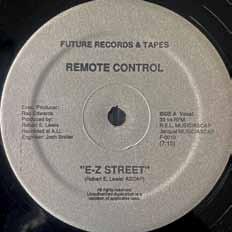
Stand out Tracks for me are:
and the electronic Go-Go track Alvin, DT.
But Jim Bennett is a personal favorite. Music by Jimmy Bennett & Family has been re-issued on a few occasions. On PPU’s first 12inch compilation, , highlighting the forgotten era of 80s FUNK & GoGo and lately, Hold that groove was recently released on Fantasy Love.
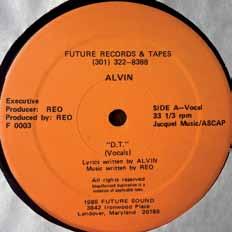 Chuck Brown’s Run Joe ,
Remote Control’s E-Z Street
Chuck Brown’s Run Joe ,
Remote Control’s E-Z Street
28
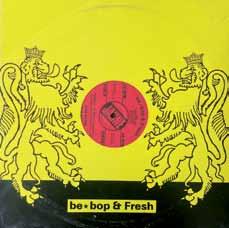
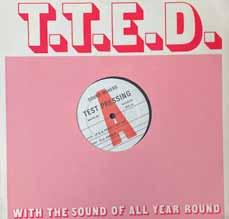
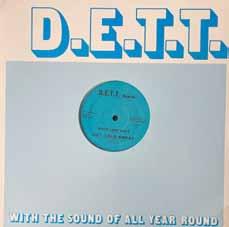


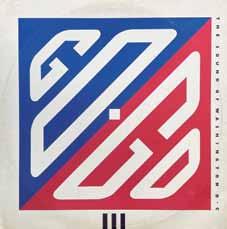
29 29
preservaTion projec T
By SKEME RICHaRDS (THE NOSTalGIa KING)
As DJ’s, collectors, music lovers and often times historians, we’re always on the hunt or searching for music that’s not on our radar and beyond out reach of proximity. Things that our basic, yet extensive knowledge is far from familiar with but piques our curiosity when we do find out about it whether through self discovery or someone else. In an era and what sometimes feels like an over-saturation of so many labels getting into the business of reissuing vinyl, there’s so much to choose from which becomes overwhelming to say the least when shopping. Titles that most times are done legally (and a lot of times illegally) with common titles, titles that have already seen multiple issues in the last decade, titles that really didn’t need a reissue and from time to time two of our favorites, titles that are extremely rare and ones that weren’t previously on our radar. With record bins filled to the max and getting to the point when we do take trips out to the shops, reissues take up more space than original pressings and it takes away some of the fun of stumbling across something newly discovered or an original pressing of something that we’ve been on the hunt for. The list of labels seem endless in trying to make a decision on what to buy and there are those that go the extra mile which for us is the name of the game, “dig deeper”.
But how deep is deeper and what do we hope to find at the end of that quest? How far does one need to go to find a holy grail of an amazing discovery to introduce it the world in hopes of inspiring others find it or something else to add on to music history? Think about how “competitive” the early days of digging was in various decades of DJ’ing but especially during the 1990’s of record fairs and sampling producers arriving early to score records which became the sample source
or drum loops for some of their most iconic works. Records and sounds that made others immediately get out on the hunt for the same records in hopes that there would be more from the artist to sample from. A time when the term “digger” actually meant something and the only tools or sources available were phonebooks, fellow records heads and dealers. When the serious troopers of record collecting like DJ Muro, Soulman, The Conmen and Kon & Amir would supply record and sample fiends’ wildest dreams of white line discoveries. So what happened to all of that magic? The internet of course and with the ease of information being at your fingertips without leaving your couch began do I dare say, the decline? In all fairness, it’s not the decline, it’s just as a new way of digging and going about discovering what’s been covered all of this time.
With the reissue business being in full swing, there are a handful of labels that are truly digging deeper to present first time releases to the masses and in the last issue I introduced Portland Oregon label, Albina Music Trust who is preserving Black Portland music culture through their re -
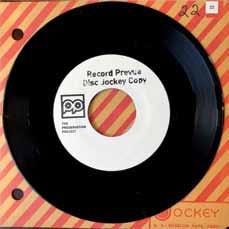
DiGG inG Deeper
WiTH THe
30


31 31
leases. In this issue, we go one step further with a spotlight on Austin Texas based label, The Preservation Project who lives by the modo, “dig deeper” and is responsible for releases that most likely never would have seen the light of day had they not been rescued from dusty storage units and defunct recording studios. The Preservation Project is an independent organization headed by John Waupsh, David Haffner and Creative Director Shaun Pauling that specializes in recovering and curating obscure 60’s, 70’s and 80’s music from the original masters and sometimes cassette tapes, then cleaning them up as much as possible for a vinyl release. Featuring a variety of carefullychosen sides to be preserved spanning the soul, funk, and rock genres, they’ve built up and impressive discography of releases to date that would have otherwise lived in obscurity.
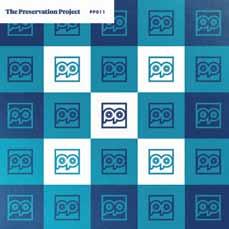
a double-sider 45 by New york Underground Funk Band “Strugglin” b/w “I’ve
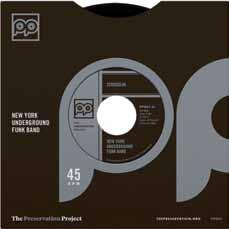
“Most of the musicians TPP will feature recorded a single acetate or tape, leaving their work unknown to the general public. It is a great pleasure to now present these fully-restored recordings from the cutting room floors of studios — many of which are no longer in operation.”
“These artifacts tell us something about the time and place in which they were made, and about the people who made them. Though we gather as much information as we can before each release, little is known about many of the recordings we offer.”
Their debut release dropped in 2016 with
Been Fooled” which shook the collectors market up and gave DJ’s something new to to work into their sets. It wouldn’t be much longer until 45 would be released featuring two more cuts, “Funk & Soul” b/w “Wanna Be Free”. Following the successful sell out release, the label went a
bit further and released a 12” featuring cuts from the second release and a fifth discovered track, “By The Time I Get To Phoenix”. The label seemed to be in full swing and living up to it’s goal but how do you follow things up from here on out? After releasing 2017’s split-sider from The Karamatics “Love Can Be Red” b/w Rose Hicks “One Word For It”, the label then released another four singles in 2018 which truly put them into the category of labels to be on the lookout for when releases are dropped as to not miss out on any record to hit the bins. Mancefield &

32
Brother Man Band “Brotherman” Pt. 1 & 2 became a favorite spin for me which was equal parts raw and funky while The Teacher Haters “Big Pig Alley” b/w “Cut Loose” delivered something new to the Garage Rock DJ’s and scene that became an instant floor filler. To keep things interesting and a sense of mystery, their single release was then pressed to double 12” which featured two cuts from an unknown artist which gave life to “We Got A Thing” b/w “Guys Today”.
breaks DJ perspective. Studying each track in full, extending breaks and other sections where necessary and cleaning them up as much as possible, what came out was a proper double A-sider for those that like to rock doubles, sample heads and lovers of psych rock alike adding to each of our discographies. WIth Supreme La Rock choosing “Sad Country Boy” and myself taking on “your Mind”, the only thing missing is the artists name as neither were present on the acetate.
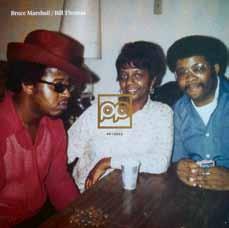
Since then, the label has released another dozen releases under Preservation Project as well as a series called Master Series which does something that no other label would consider doing in giving the serious collector something more. The Master Series as stated by the label “is for people who understand that some things just can’t be tamed. (Read: these are scratchy, poppy, and rough recordings from busted acetates). Each release has been cleaned up as best as they could but they are in no way near perfect and are not for the picky listener or collector. They are a listen into what could’ve been, but never was was and highly collectible in their own right. With a total of 4 Master Series releases to date and each being in the funk & soul genres, the label presented a specific idea to Supreme La Rock and myself on the fourth release with both acquiring a side and doing a remix of the selected track which piqued of our interests. After hearing each side of heavy drum break psych rock, we both knew that we were ready to take on the task of giving them the Butta Bros treatment especially coming from a Hip Hop and
Most likely by the time that you read this, my cassette tape compilation mix of The Preservation Project catalog should have already dropped for you to get a close to full scope of some of the music that the label has released to date. When I said that the label digs deeper, I wasn’t kidding, they really do go to the furthest lengths of finding whats undiscovered and presenting them so that the artists music lives on in a way that they wouldn’t otherwise.
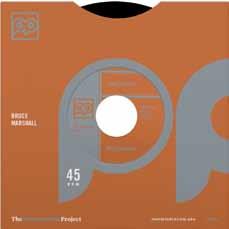
33
a collec Tor’s Feas T oF Fun, Funky, anD Bizarre
By SpaNKIE HazaRD aND SwIFFT EDITS (SEDGwICK RECORDS)
Eye-popping colors, trippy graphics, and sleeve after sleeve of funky cartoon hipsters: Welcome to the world of vintage Japanese record art. Long-term Japan residents, diggers and art aficionados Spankie Hazard and Swifft Edits break down what’s special about nuttily-illustrated Japan-market seven-inch and LP covers.
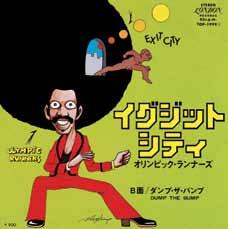

SEVEN INCH WONDERS
In many countries, the humble seven-inch single was a visually simple product. A sleeve of plain paper. Or a company sleeve printed in the record label’s signature color–or maybe two colors, if the label had the cash. Such austerity was particularly common in America, where many of the most desirable 45s were pressed. yet in some markets, particularly eastern Europe and Japan, record buyers were treated to far more flash. Sevens came with picture sleeves whose art could rival that of LPs in its originality and flair. As the popularity of sevens has exploded over the past few decades, so has collectors’ desire to pick up these visually exceptional records.
Japanese sevens are particularly alluring. There’s the exotic script, of course, gorgeously indecipherable to most Westerners (but usually with some helpful English alongside the Japanese). And then there are the pictures. The most striking are hand-illustrated and feature dancers, singers and disco scenesters partying like 1975 would last forever. Psychedelic cityscapes and the occasional absurdist scenario–like the finger jabbing straight through the head of the character on Cream de Coco’s “Wiggle, Wiggle, Wiggle,” or the naked figure leaping from the Afro of the character on Olympic Runners’ “Exit City”–only add to the fun. For diggers of funk, soul and disco, there is an incredibly deep trough of grooves with equally funky covers.
japanese recorD arT:
34
Like their cousins in Europe, Japanese distributors used existing photography or typography when they could, even if they felt the need to change song titles to appeal to local record buyers and DJs. Jabara’s “One Man Ain’t Enough” became “Funky Driver” and Armada Orchestra’s “Tell Me What you Want” became “New

were rock stars (or, in most cases, aspiring rock stars in need of side gigs). Perhaps the best known and most recognizable funky Japanese seven artwork is by Emori Ai. Emori started as a young club-goer in Tokyo in the early 1970s, getting his fill of funk and soul. He gained a reputation as a talented dancer, but what he really wanted to be was an illus -
Things got more interesting when companies created their own picture sleeves, either because they couldn’t source outside artwork or their new song titles required matching visuals. The demand for imaginative local packaging intersected nicely with an oversupply of talented artists in a country where manga illustrators
trator. His murals for a large disco in the Shinjuku district of Tokyo got people talking, and soon requests started coming in for artwork for local releases of funk and soul records. His recurring cast of stylish Black hipsters appeared on records from a wide range of labels–Motown, Philips, Avco, Mercury, A&M–in a branding freefor-all that would be unthinkable these days. Emori’s artwork made the music look simultaneously exotic and approachable, and above all fun. An Emori record often included dance-step instructions in the liner notes, again using the familiar characters–a feature made possible by the artist’s skill as both dancer and illustrator.
Emori often collaborated with a second artist, known only as Gangster, whose specialty was bizarre backgrounds, typography and framing. Emori-Gangster collaborations feature city skylines that range from the rudimentary to the detailed to the freakishly abstract.
“REMIXING” LP ART
Sevens weren’t the only record format to get the make-over treatment in Japan.
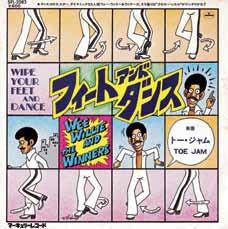
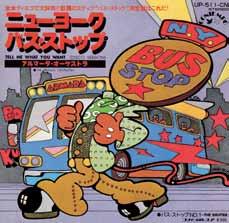
35
york Bus Stop,” to name just two automotive-themed amendments.
With LPs, local distributors had art from the original overseas release to choose from. But they sometimes made changes or added flourishes to meet the needs of the Japanese market. A good example: “Food for Thought” by the JBs. The original US artwork is simple and text-based–just the song titles printed over a black and red background. That didn’t exactly

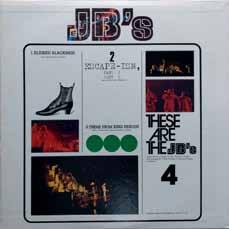
“Pass the Peas” in some markets in Europe and South America, complete with a distinctive photo of green peas on the cover.
In Japan, the local distributor kept the original album title but ditched the art in favor of photos of the band playing live. It also plastered the title of one of the songs, “Wine Spot,” prominently in the center of the sleeve, like a second title, and in Japanese on the obi and insert–wine being, one assumes, universally recognized as an ingredient of a good party. The overall effect conveys the funkiness and energy of the music inside.
Emori Ai and Gangster were also heavily active in LP design, with some of their greatest work on compilations for Motown, RCA, All Platinum and others. Other stunning LP artwork was produced for Ultra
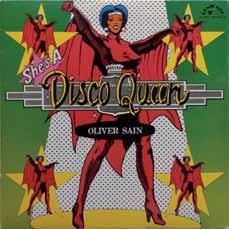
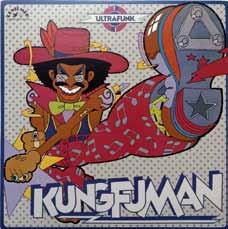

help sell the record to non-English-speakers, which is probably why it was re-titled
So, enjoy this selection of LP and 45 cover artwork
Funk by T. yamamoto and Oliver Sain by S. Okada.
36
from the Land of the Funky Sun!

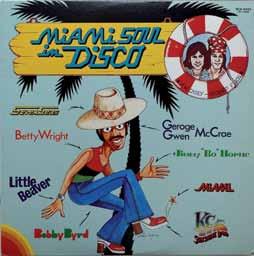

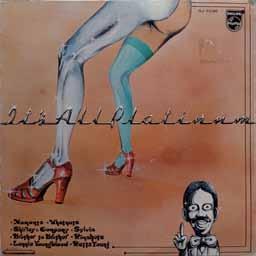
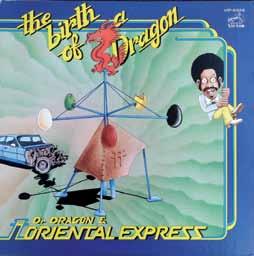

37



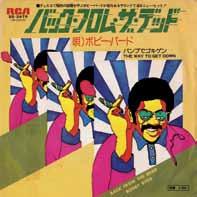
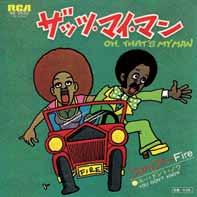
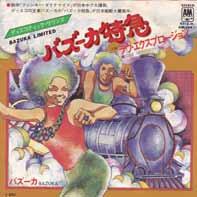
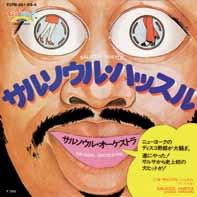

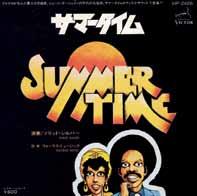

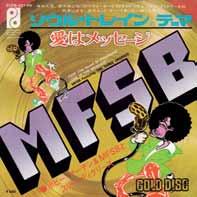
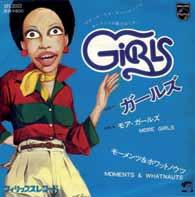
38
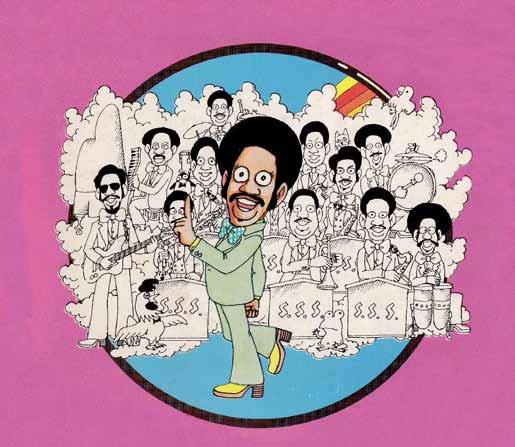
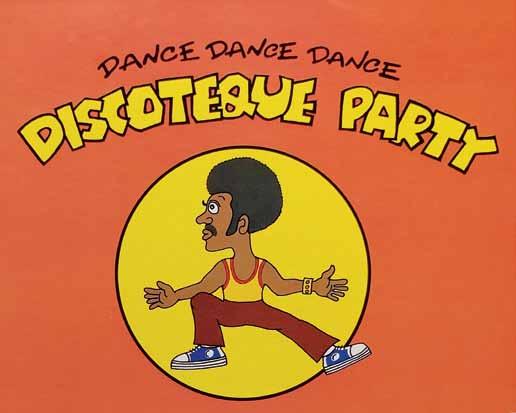
39
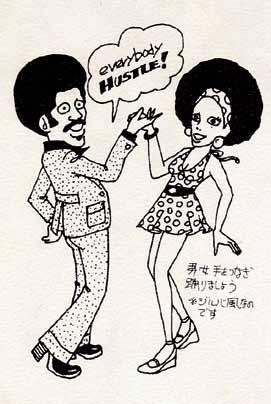
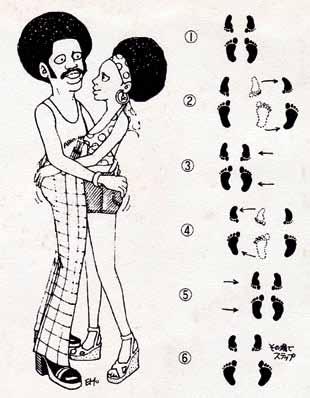
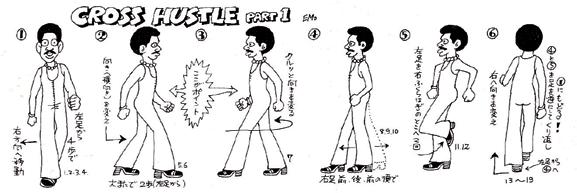
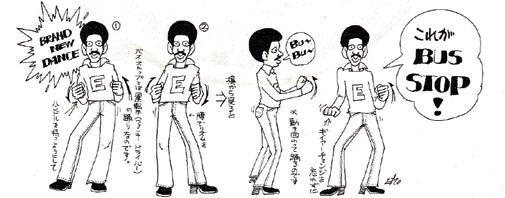
40
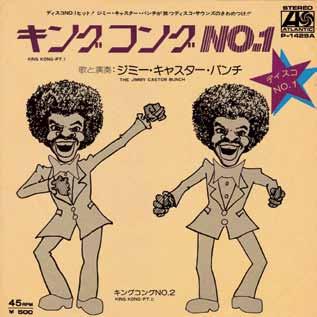
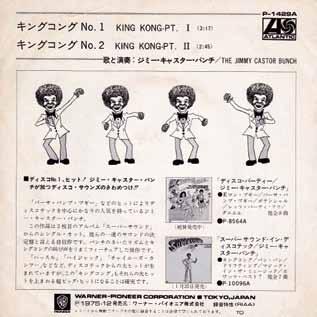
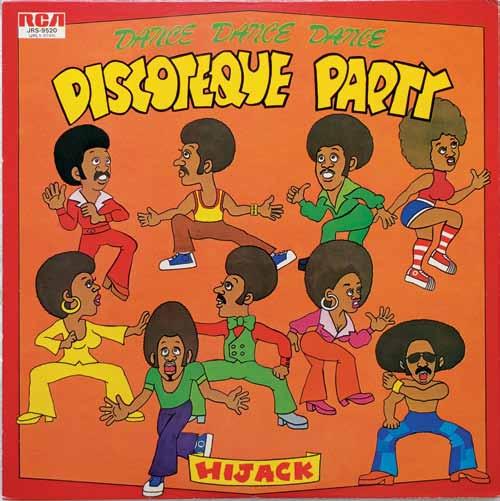
41
mike G (junG le BroTHers) inTervieW
by JaSON aRMITaGE (DR. J)
Jason Armitage (Dr.J) is the founder of the Roots Forward Records label in Canada. The label ran successfully from 2011 - 2019 and put out rare and unreleased 80’s and 90’s rap music on vinyl and cassette. The label’s discography included music from legends Marley Marl, Schoolly D, Krown Rulers and countless others. Jason is an avid collector of funk, disco, and house music and has been deejaying actively since 1991. He also hosts the “Expansions” radio show - one of Canada’s longest running programs devoted to classic rap and funk music. Jason recently caught up with the legendary Mike G
1. Describe the process of putting “Straight Out The Jungle” together.
The process for recording the music was pretty organic where Baby Bam would blend particular breakbeats back to back and we would figure out verse parts, break downs and the chorus. Verses, we would write during school, on the train to the studio, in the studio or anytime we got inspired. It was overall fun all the time, the studio was the last stop on the D train if remember right and like a 20 30 min walk. For me it was like almost a 2 hour trek but well worth it.
album and we were trying to loosen up and work on ideas, Baby Bam and Red were working on a blend and I started clowning around talking about Jimbrowski. Good ole Oswald who was the engineer at time and for just about the whole LP always recorded everything. When he played it back we were all laughing our heads off and then quickly elaborated to keep the vibe. 2 hours later Jimbrowski had been introduced to the world. RIP to my uncle Ernest “The Ness” Morris who came up with the saying.
3.This album is deemed a “classic” in rap circles. Why did it resonate so strongly with rap fans?
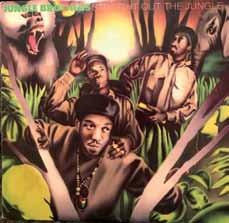
I believe at the time, Hip Hop musically was moving into its next phase, where up to that point there were still concepts and styles that hadn’t been recorded. I think the looseness of our vibe came through clearly on the record along with our concepts and sample selections. We were able to stamp our place in time because we were all so young.
4.How did the success of the album impact you personally?
2.Share a memorable moment in the making of the album.
For me one of the most memorable moments was when we first started on the
The travel aspect of it impacted me the most, getting to see the world and how people all across the globe are connected through music really blew my mind. And to some point still does to this day, especially with how fast music comes
42

43
out nowadays. Somebody in India can just about hear a dope tune come out just about the same time as someone in Ny and be talking about it that night.
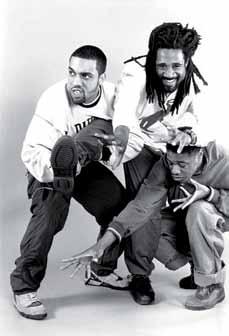
Crazy!!!
5.What are your 3 personal favourite songs off the album?
Straight out the Jungle
drew them over along with background, and the airbrush style hit it right on the head.
7.Reflecting on the album as an artistic work, would you have done anything differently?

Maybe just added more songs, for me as we were trying to wrap it up I felt other concepts coming through to add on, but who knows, as they say “less is more”.
Behind the Bush On the Run
I think these songs capture our personalities the most and the time when we recorded them. Honestly my 3 may change when I listen again, so many good memories.
6.I love the cover imagery on this LP. Talk briefly about the album artwork and how that came together.
We just stuck to the concept, the pictures of us actually came from our first promo pics, the artist got a hold of them and
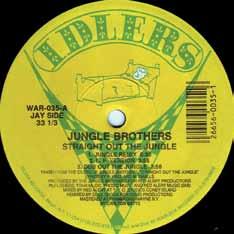
44
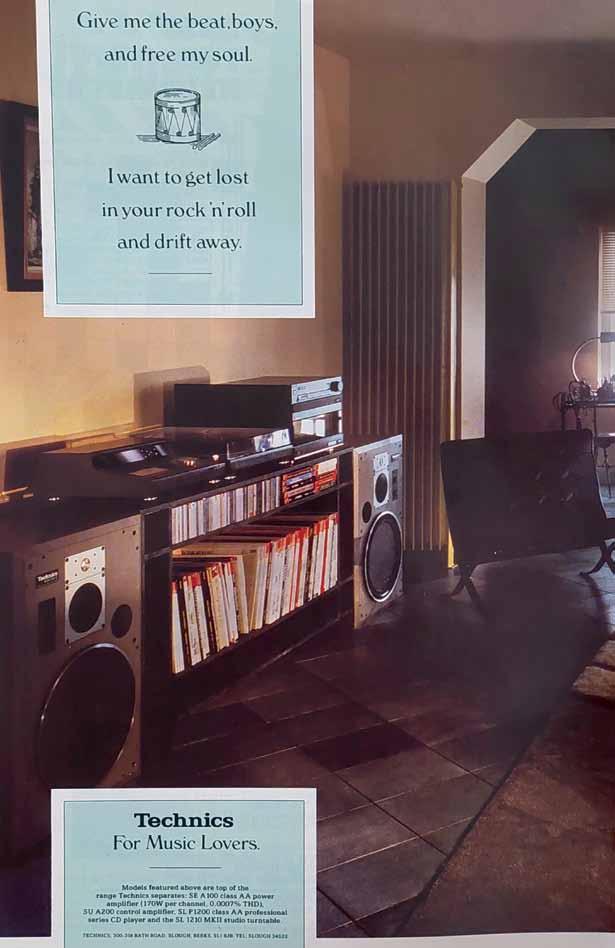
45
AffordAble funk
(R aRE DOEsn’t always mE an bE ttER)
By NIEl S HOEKE aND MaRCUS paTT y BROUGHT TO yOU By FaCTS ON wax
Many moons ago, I came up with the name Affordable Funk in regards to an idea I had for a mix series. The mixes would contain relatively easy to find records that anyone could afford. Mainly as a counter balance to all the ‘look at how much I paid for this expensive record’ ridiculousness.
Over a decade later it seemed like a good idea to dust off the term and we (team Facts On Wax) decided to make it one of our weekly returning items on social media. The times we live in now, kind of calls for something inclusive wouldn’t
you say?!
So what exactly is Affordable Funk?
Firstly of course there’s the affordable part. Meaning accessible for anybody and still available for a below average price. We are talking about records that you could potentially find in a bin all around the world, right now.
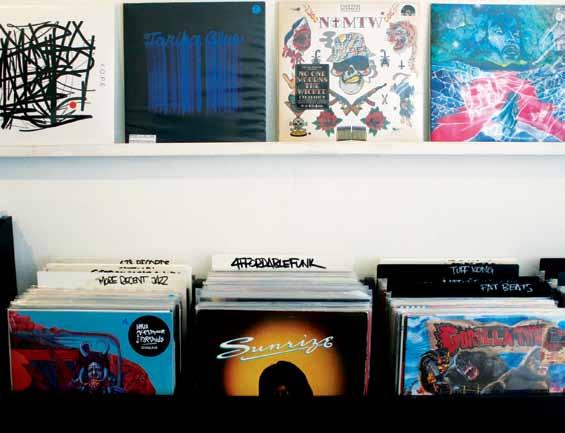
Secondly the funk part stands for soulful and funky black music. It doesn’t have to be purely Funk music to be considered Affordable Funk.
To clarify even further, we are only counting albums or EP’s released between the
46
late sixties and late eighties. This does not include 12-inches or 45’s.
Sure there’s tons of records I’ve found over the past decades that are now impossible to find (let alone for the price I paid for them), but that’s not what this is about! In the past decade, we have seen the prices of vinyl records skyrocket and in the future we might have to slowly adjust the definition of affordable. Right now anything around 10 bucks sounds like a deal, but we would like to expand the term by adding in one additional component…value for money!
Just look at certain records, such as Bobbi Humphrey’s “Satin Doll” (1974) on Blue Note Records. I found one for a buck twel -
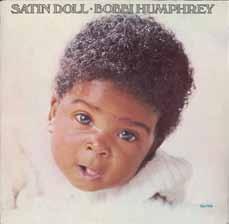
played Norman Connors’ “Mr. C” and every single song on there is straight fire! For argument’s sake let’s say right now you’d have to spend twenty five on this beauty. Divide that by eight amazing songs and the outcome to me is still Affordable Funk! The math one these LP’s just doesn’t lie. Personally I’d rather spend twice as much on something that is of a much higher caliber.
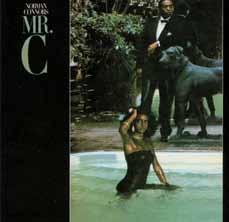
ve years ago at Groove Merchant (San Francisco) in pretty nice condition might I add. Fast forward to now, I think you can still find one for a tenner, but more importantly how amazing is this album?! Musically I believe it’s value is much higher, partly due to the contributions of the amazing Mizell brothers. That being said I would like to divide Affordable Funk records into two categories.
● One hit wonders - containing one nice song (examples: Foxy “Mademoiselle”, Billy Squier “The Big Beat” & Linda Clifford “Never Gonna Stop”)
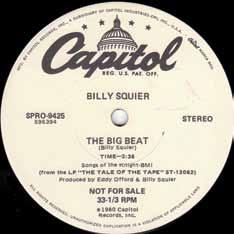
● Undervalued classics - something you can listen to from start to finish (examples: Bobbi Humphrey “Satin Doll”, Norman Connors “Mr. C” & George Duke “Feel”)
Now the undervalued classics might just be a bit more expensive, but pound for pound they are “cheap”. A while ago I
During my travels to the United States, I have been blessed to be able to go through tons of dollar bin records. A thing of beauty and unfortunately almost non existent here in Europe nowadays. To elaborate on this a bit more. What I have noticed is that in the US everything comes in bulk. They are used to doing things BIG. We buy a couple of records in Europe, they buy a mystery box full of records for twenty five dollars and throw it in the back of their pick-up truck. It all comes down to space doesn’t it? Look at how cramped a city like Amsterdam feels at times. No one in their right mind
47
is going to try and stuff twenty thousand records in a one bedroom apartment. When living in a much more spacious city such as Los Angeles, the sky’s the limit. I’m sure a record store like Amoeba Records has a dozen or more copies of Fleetwood Mac’s “Rumours” coming in weekly, so it makes sense one with a banged up cover makes its way into the dollar bin often. Over here in Europe less copies make it into the shop, so even with a banged up cover it goes for a pretty penny.
The joy of going through so many cheap records is that it’s worth taking a gamble every now and again. When that gamble starts to equal the cost of lunch, all of a sudden it becomes less of a joy. Besides, records were never that expensive. At least not back in the days. I remember my mom went to New york in the mid-nineties and she brought some records back for me from Fat Beats (this was before Fat Beats Amsterdam had opened). Mind you, the price of a brand new LP was just six bucks back then!
No wonder I hear so many young people talk about their ‘extensive’ vinyl collection, after having accumulated around forty records. With the current prices of an album being 25 or 30 bucks it seems a costly endeavor to start a collection these days.
Records have become a rich man’s sport. This brings me to my next issue. It seems like records (especially highly in demand niche music) have become only collectible for those who have an enormous disposable income. Owning an original pressing of certain albums tends to have a certain effect on people. Many Internet heroes show off their thousand dollar heat, but let’s be real people. Did you seriously just drop a month’s worth of rent on that one record or did you manage to procure it before it dried up like a raisin in the sun?
Did I see this madness coming? yes! Did I intentionally stock up on a few centerpieces that should be in everyone’s collection? I sure did! Sadly everything you ‘collect’ has a value and said value is of more importance now than it was a few decades ago. For some reason every single ‘record collector’ is looking for an original copy of Ahmad Jamal Trio’s “The Awakening” and on top of that its monetary value is always mentioned. We live in a time where the price of an item is almost as important as its emotio -
nal value. I feel we need to go back to the basics and stop looking at these prices. Like a wise man once taught me, get on your knees and start going through the bins on the floor. Bargain records can be just as good as expensive ones. Sure I take pride in the fact that my collection is pure quality over quantity, but that took me almost thirty years. Affordable Funk records are everywhere and I pride myself in having a ton of them for sale all the
time, because good music is good music and I often pick up extra copies to hand down to others. A five hundred dollar record is not always better than a ten dollar record. When you leave out the rarity factor, I believe Earth, Wind & Fire albums to be the perfect example of value for money records.
If I would be getting into gathering music in the form of vinyl records, I would start at the basics! I’d educate myself by building a solid foundation and to me it makes more sense to start with amazing, yet affordable records and work your way up to rare and limited.
Of course building up a collection (of anything) is a personal journey, but for many it may seem overwhelming at first. The key is accepting that knowledge comes with time and realizing you can’t know everything straight away. Music is a never ending adventure that (most of the time) ends up in a completely different place than where it starts out, yet should be about having fun along the way rather than reaching your destination. Wherever you are on your journey, I hope discovering music still brings you joy!
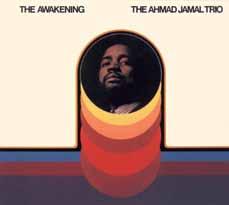
48
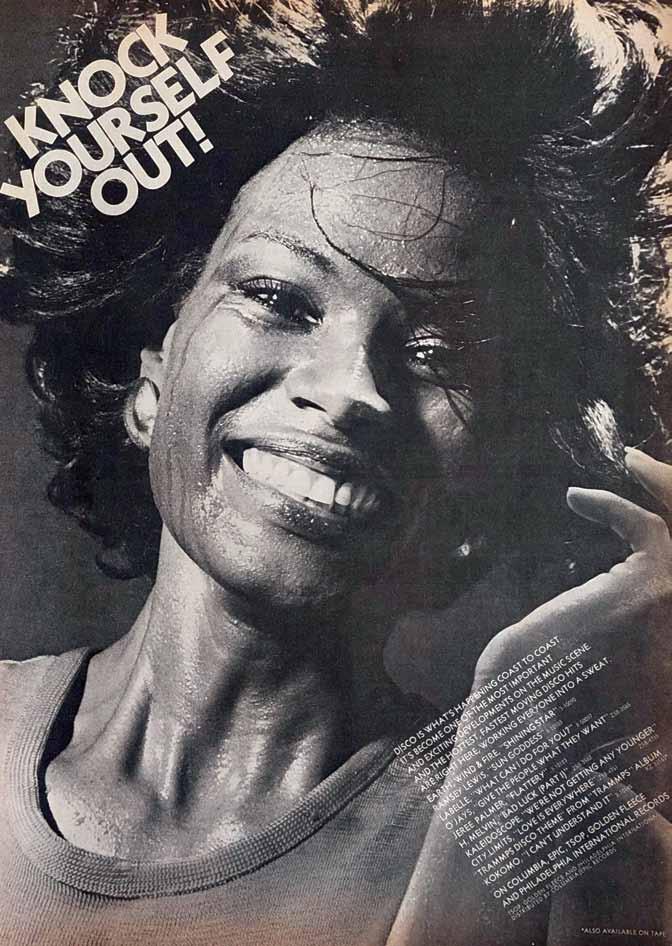
11 FavoriTe Tracks of oliver Way
Oliver has been a recognised figure in the Techno & Electro scene for some time. Beginning his DJ life in 1991 while working in a local record shop in Buckhurst Hill, Essex called Bass Box Records (owned by legendary rave organisation Raindance).
He cut his teeth in the early Techno scene around London playing clubs such as EC1 and Greys Inn. In 1993 he moved to New york where he became involved with the evolving Rave scene, helping put on various events as well as DJing at clubs and events around the city.
Upon returning in 1995 he started the record label and DJ booking agency Morpheus Productions. Under this pseudonym he also released his first records. In 1998 he was offered the residency at Dublin’s JDP events that were held in the club owned by U2 ‘The Kitchen’ - which was in the basement of the Clarence Hotel owned by Bono. It was at this time he started Urban Substance cords with JDP owner Jason Denham and releasing his own music, as well as other artists such as Robert Armani.
Oliver later joined the Electro / Techno / Funk outfit Detroit Grand Pubahs. Taking up the pseudonym (The Mysterious) Mr O he produced alongside Paris the Black FU for their own label Detelefunk label. More recently he has collaborated with Ben Long (Space DJz) on numerous releases and provided remixes for labels like Torque, Engineroom, Beard Man and BulletDodge Records. In 2001 alongside partner Jonas Stone he started EPM Music, which has grown and grown over the years to become one of the most reputable electronic music companies working in digital distribution & music publishing.
EPM’s co-founder and one half of the Detroit Grand Pubahs, Oliver Way has spent the best part of a quarter century promoting and pushing other artists, currently managing Robert Hood, Floorplan, Eddie Fowlkes, James Ruskin & Mark Broom. His debut solo album was released in 2018 titled ‘From The Shadows’ on the EPMMusc imprint.
Since then he has started a label with Laurent Garnier & Scan X called Cod3 QR and continues to release new music under his own name and with various collaborations.

50
Detroit Techno at it’s finest by one of its genre defining artists, ‘Mad’ Mike Banks. Mike was a session musician for Motown who later went on to produce in dance music groups such as Members of the House, and later started the label and group Underground Resistance alongside Jeff Mills, and soon after Robert Hood. This track is on side D of the ‘Electronic Warfare’ double EP. Mike shows off his musical skills with this sublime lesson in how to do techno right: with soul, funk and emotion. The ethereal strings on this make the hairs on my arm stand every time. The synth melody gives a sense of flying through space. A true masterpiece by an absolute legend whose music plays a large part for me getting into techno music.

Released in 1996, Planetary Assault Systems is veteran UK techno producer Luke Slater. This is a track that inspired me to produce music, its hypnotic minimalism fascinated me and caused me to deconstruct it to see why it managed to stay interesting for so long, with what sounded like so little. But after more thorough evaluation I realised there is a lot going on than you realise. Rises that keep the track moving, the occasional sound of a reverb loaded clap to catch your attention, subtle changes that keep things evolving, for over 10 mins. ! An epic journey into deep techno that is now 27 years old !

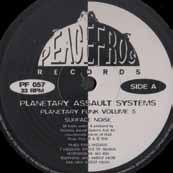
3. d etroit g rand Pubahs ‘Engineroom’ (Engineroom)

A track I made with the previous listing in mind. I wanted to make a track that was hypnotic, minimal, and managed to keep building for over 10 mins, like Surface Noise. There are subtle changes that you don’t notice unless you are really listening. The main difference is that ‘Engineroom’ has a live instrument in the form of a saxophonist from Belgium called Domgue. He recorded a bunch of live takes which I then edited to fit into the mix. Paris the Black Fu added the final touch with the shimmering strings. A track I am very proud of as it is also named after a good friend who passed away too soon.
4. Laurent g arnier ‘ tales from the real World’ (Cod3 Q r)
Taken from his latest album recently released this summer. Anyone that knows Laurent Garnier will know his music and DJ sets are very personal and always a journey. This is no different. The vocal sample from an Alan Watts teaching on how to meditate fits so perfectly into this epic track. A solid 4/4 beat keeps your head nodding, basses pulse, while the gritty synth and hats build into a frenzy of euphoria. A huge track for the dancefloor, as Alan Watts states: “you don’t have to try to understand anything, just listen to the sound”.
51
1. u. r ‘ t he i lluminator’ (u nderground resistance)
2. Planetary a ssault systems ‘ surface n oise’ (Peacefrog)
5. d any rodriguez & o liver Way ‘First act’ (Link audio)
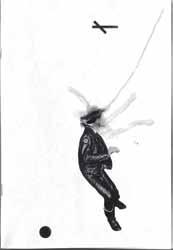
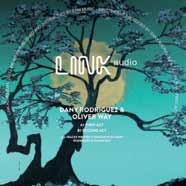
A track I am very proud of, and it came together in one session. Sometimes this happens when the stars align and the vibe is there. I had this beat and piano demo track, and took it to Dany’s studio to work on it together. Within a short space of time it had come to life. Dany has an incredible collection of vintage synths, and he is a great at developing pads and melodies with them. The Kurzweil 2500 is one of the great synths and plays a big part in creating the emotion of this track. This is not club techno, but techno track with an electro beat that I love to listen to, and hope you do too.
Myself, and a long time friend / production collaborator, Jason Carter referred to this track (and numerous of Robert Hood’s tracks from this period) as ‘ant music’ because we imagined his music to be the soundtrack to ants working. Released in 1994, it was on the first EP that was released on his own M-Plant imprint (‘Protein Valve’ EP), and started the sound that Hood was to become so synonymous with, stripped back, minimal sounds, used to devastating effect which may seem so simple, but believe me this is not easy to execute well. Galloping bass, bleeps, 2 keys on a keyboard repeated, and these big strings give rise to one of the most seminal tracks in techno history.
Sandwell District was a techno group consisting of Regis, Silent Servant and Function whose releases were on their label of the same name. They split up back in 2011, but recently have reformed for live performances around the re-release of this album. Tracks like “Immolare” and Silent Servant’s ‘Untitled (Regis edit)’ are some of my all time fav techno tracks. Deep, dark techno as it should be.
I highly recommend checking out all of their music on their label Sandwell District, and discover a world of sparse, evolving, futuristic deep techno that constantly evolves throughout every track

52
6. robert Hood ‘a .M track’ (M-Plant)
7. sandwell d istrict ‘Feed Forward’ ( t he Point o f d eparture recording Company)
8. Freddy Fresh ‘a fter t hought’ (EPM Music)

Freddy is someone whose production I have admired for decades. He made his name with big beat collaborating with artists like Fatboy Slim, but I always prefered his melodic electro / electronica music that is deep, and shows his skills as a pianist, besides his ability to know exactly what he is doing with modular synths like no one else I know. Who the hell knows that to get the best out of a Synthi VCS3 you need to take your shoes off
9. vril “a lte seele (Marcel d ettmann & vril b ass Mix)” (d elsin)
Although both artists are known in the techno scene this is an electro track.
The original version is cinematic, electronica which you could imagine as part of the soundtrack for Blade Runner during one of the dystopian cityscape fly overs.
Dettman & Vril take this original and give it a massive kick up the arse with an 808 beat, adding extra grit, and driving the original ambient track to the dancefloor.
10. dJ Hyperactive ‘ reptilian tank’ (Contact)

This track defines a unique style of the Chi-Town (Chicago) jackin’ sound. Hard hitting kick, short jagged stabs, with escalating high frequency synth that sounds like it’s wobbling, creating tension as it swirls up and up before dropping the back in with the snare. A quirky sound that DJ Hyperactive became renowned for when it came out in 1996. It was ground breaking as it was produced in a completely different way than had previously been released on other Chicago labels like Dance Mania or Underground Construction.
It came out on Contact Records which was Hyperactive’s own label, and every release is an education in this style of ‘nu jack’.

11. suburban Knight ‘Winds of Fear’ (EPM Music)
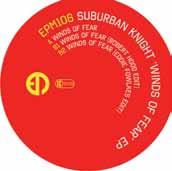
Once again electronic funk is showcased in a Detroit Techno track, this time another Underground Resistance artist, Suburban Knight, who is probably best known for his releases on Derrick May’s Transmat label ‘The Groove’ and ‘Art of Stalking’. On ‘Winds of Fear’ he comes up with the grooviest bass line, and rhythmic drumming. There isn’t much to it, but it has such a vibe about it, ending too soon.
This release is supported with 2 other Detroit legends: Robert Hood & Eddie Fowlkes both providing edits and adding their own unique touch.
53
Vintage Studio 54 memorabilia Collection of Wild Life Archive
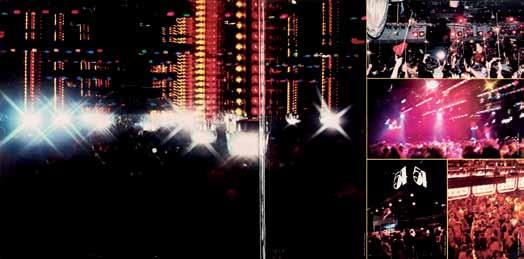
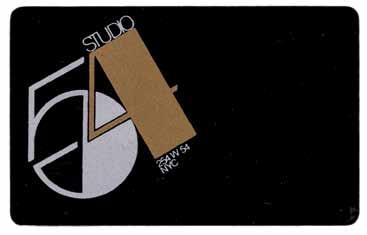
About Wild Life Archive: A collection of ephemera, books, magazines, clothing & related artifacts documenting dance music culture from its early origins through to today’s global scene including New york disco, Chicago house, Detroit techno, Belgium new beat, Ibiza balearic and UK acid house to name a few.
This unique archive has been exhibited at world class museums and galleries including the Geffen Contemporary at MOCA in Los Angeles, Design Museum in London, Institute of Contemporary Art in London, Barbican in London, Tate in Liverpool, V&A in Dundee, Bozar in Brussels, Philharmonie in Paris and Vitra Design Museum in Germany.
54
studio 54, 254 West 54th street, new york Membership card - sundays at studio - 1982
studio 54, 254 West 54th street, new york Compilation LP gatefold - a night at studio 54 - 1979
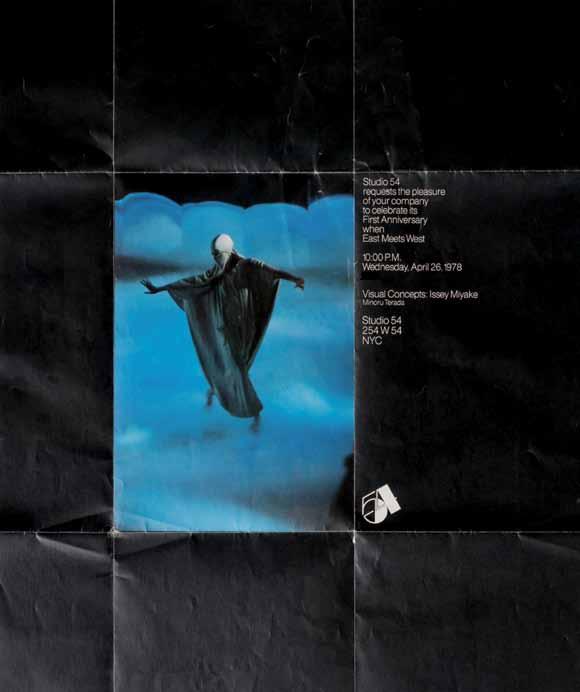
55
studio 54, 254 West 54th street, new york
Poster invite - 1st anniversary - East Meets West - 1978
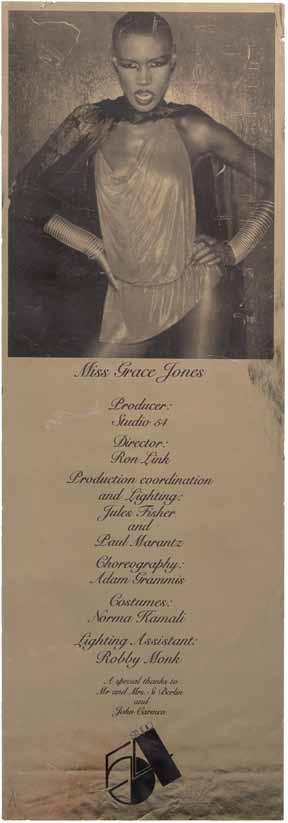

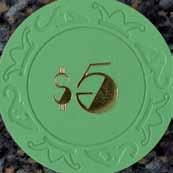
56
studio 54, 254 West 54th street, new york drink token - c1980
studio 54, 254 West 54th street, new york
Flyer invite - new years Eve - 1977
studio 54, 254 West 54th street, new york
Flyer invite - new years Eve - 1978

57
studio 54, 254 West 54th street, new york
Flyer invite - i Love new york - 1979

58
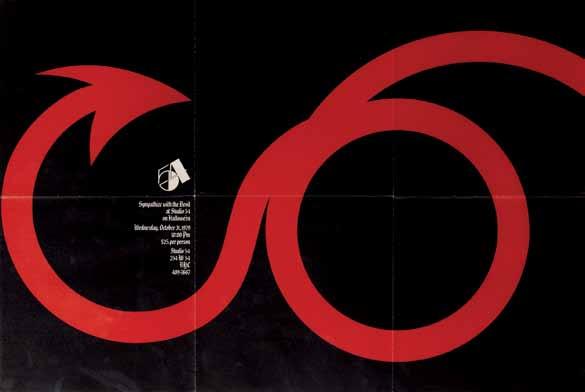
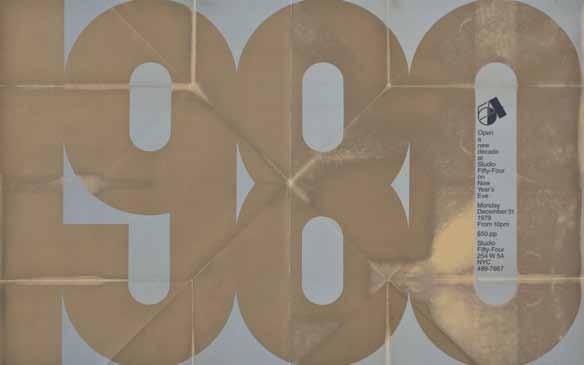
59
studio 54, 254 West 54th street, new york Poster invite - Halloween - 1979
studio 54, 254 West 54th street, new york Poster invite - new years Eve - 1979
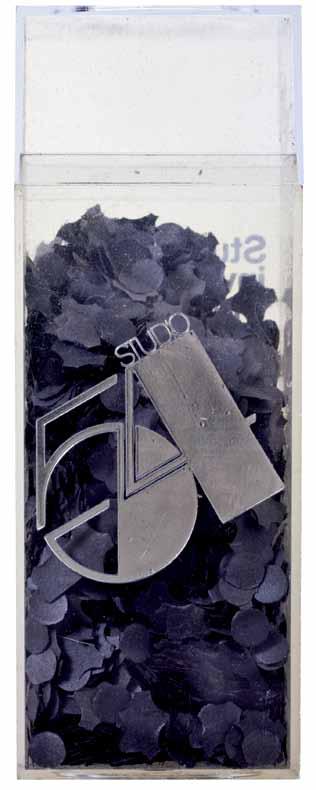
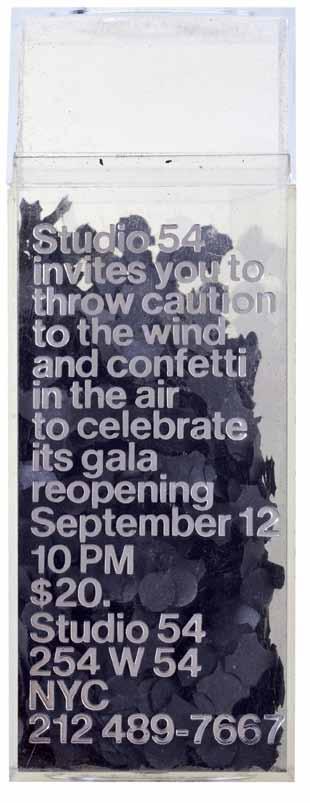
60
studio 54, 254 West 54th street, new york
Confetti box invite - gala re-opening - 1978
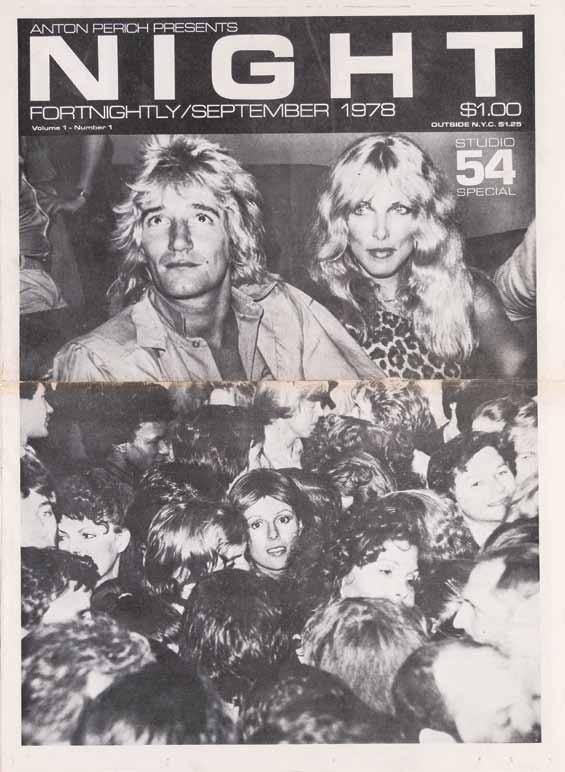
61
studio 54, 254 West 54th street, new york night magazine - studio 54 special - 1978
cD Fair
Den BoscH presenTe D By recorDplaneT
This November the 57th edition will take place in ’s Hertogenbosch. The first editions were held in the Jaap Edenhal in Amsterdam were i always went for hunting records. Later they moved to Utrecht and grew big in space. Now they found their new home in ’s Hertogenbosch.
The previous Mega Record & CD Fair on April 22 and 23 was a real treat ! It is a top location and easy to reach, parking close by and lots of space between the stands.
They have dealers from all corners of the world, coming from as far as South Africa, Japan, Brazil, Mexico, Australia, Ukraine and every European country. Together they fill 16,600 square metres. The genres on sale across an area the size of nearly two football fields vary in equal amount. Krautrock, Speed metal, Prog. Nederbeat, South African jazz, Cape Verde folk, you name it. If there’s a record you’re looking for, chances are it’s here in one of our 550 stalls. They are the world’s undisputed largest record fair with an unprecedented number of visitors.
But RecordPlanet is more than just the biggest record fair in the world. It’s a place

where people meet, connect and share their love and passion for music and vinyl, we feature exhibitions, autograph and listening sessions, book presentations and live performances.
Recordplanet dates 2023/2024
• August 27, 2023
Record & CD Fair Hoorn
• Sunday September 24, 2023
Record & CD Fair RAI, Amsterdam
• September 30 & October 1, 2023
Haarlem Vinyl Festival
• November 11 & 12, 2023
57th Mega Record & CD Fair
Brabanthallen ’s-Hertogenbosch
• April 13 & 14, 2024
58th Mega Record & CD Fair
Brabanthal len ’s-Hertogenbosch
• November 9 & 10, 2024
59th Mega Record & CD Fair
Brabanthal len ’s-Hertogenbosch
meGa recorD
&
This bi-annual record fair in the Brabanthallen in ‘s-Hertogenbosch, The Netherlands (previously in Utrecht) is without doubt the largest record music fair in the world.



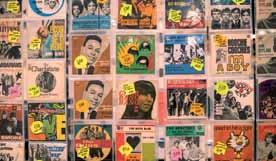
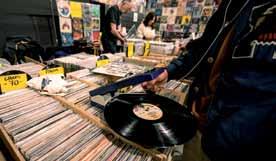


63
BoomBoX by STUaRT BaKER
SOUl Jazz RECORDS

After fermenting in the community centres, parks and block parties of the South Bronx for much of the 1970s, it was the sudden worldwide commercial success of The Sugarhill Gang’s ‘Rappers Delight’ at the end of 1979 that was to prove the true catalyst for the rise of hip-hop in the next decade and beyond. While Kool Herc, Grandmaster Flash and Afrika Bambaataa were already iconic figures - musical pioneers and masters (grandmasters in fact) in the art of the turntable - it was the young unknown MCs of the Gang (Wonder Mike, Master Gee and Big Bad Hank) who led a nation of millions to realise that ‘if these guys could do it, why can’t we?’ In much the same way as The Ramones and The Sex Pistols kick-started punk, The Sugarhill Gang’s ‘Rappers Delight’ became the great democratiser of hip-hop. And as hip-hop mythology tells us, Sugarhill’s Big Bad Hank was being auditioned outside the pizza place where he worked by label boss Sylvia Robinson when Wonder Mike happened to walk by and knock on Miss Robinson’s taxi window to ask if he could rhyme too. The message was clear – literally ANyONE could be an MC. Hank had not even written his rhymes, instead borrowing a notebook to use for lyrics from his friend Casanova Fly (aka Grandmaster Caz of The Cold Crush Brothers), including the line ‘Check it out, I’m the C-A-S-A-N, the O-V-A and the rest is F-L-y’ which you can hear on ‘Rappers Delight’. All that was needed to make a record that could possibly sell a million was to know some musicians (usually elder siblings) who could re-play a popular disco break while you and your friends laid down some rhymes. This was the logic that led to an avalanche of hip-hop records on small and independent label at the start of the 1980s. With the corporate
music industry yet to realise the music’s potential, the first hip-hop groups all signed to small independent labels based in New york. And although hip-hop’s epicentre was the South Bronx, all these labels were based in Harlem save for Sugar Hill Records, a short 20-minute drive away from 125th Street across the Hudson River into Englewood, New Jersey. And the owners of these first record companies to record hip-hop had all been involved in black music since the days of rhythm and blues dating back to the 1950s and 60s. ‘Rappers Delight,’ was released on 16 Sep 1979. By the end of the year there were around twenty hip-hop records in existence. Quick off the mark, Bobby Robinson’s Enjoy Records released early singles by The Funky Four Plus One, Grandmaster Flash and The Furious Five, Spoonie Gee (who was Robinson’s nephew), The Treacherous Three, Kool Kyle Starchild, The Disco Four and others.
64
yo !
Robinson ran a record store, Bobby’s Records and Tape Center on 125th Street in
Harlem, and one regular at the shop was Peter Brown, a hustling music producer. Brown released a few funk singles on his own P & P label in the early 1970s and then around 1976 began producing and distributing scores of underground disco 12s, often in partnership with producer and arranger Patrick Adams, which were released on a handful of his own boutique labels such as P&P, Heavenly Star, Land of Hits, Queen Constance and Golden Flamingo. In 1980, Adams began releasing a number of early rap tracks by the likes of Spoonie Gee, Tricky Tee, Sweety G and Margo’s Kool Out Crew. Also based in Harlem, ‘Fat Jack’ Taylor had run the rhythm and blues labels Tayster and Rojac in the early 1960s before becoming owner of the Harlem World Cultural & Entertainment Complex, aka the club Harlem World situated at 116th & Lennox Ave. The club became a central location of early hiphop when Harlem World began regularly hosting some of the first rap shows and battles. Taking advantage of this position, Taylor revived his dormant record labels
to release a few classic early rap tracks by Love-Bug Starski and The Harlem World Crew, and Dr Jeckyll and Mr Hyde. Back up on 125th Street there was also Paul Winley who, in the 1950s and early 1960s, had run Winley Records, a doo-wop label releasing The Paragons, The Jesters and others. In the early 1970s Winley switched to funk music releasing albums by Jimmy Castor, the Mighty Tom Cats and The Harlem Underground Band (which featured George Benson). At the end of the decade, quick to realise that these records were now finding favour within hip-hop circles as breaks, Winley capitalised on this and began releasing early hip-hop tracks by his daughters Paulette and Tanya, ‘zulu Nation Throw Down’, the debut release from Afrika Bambaataa, the zulu Nation and Soul Sonic Force, and a host of ‘Super Disco Breaks’ collections of funk and disco tracks popular for their breaks (such as James Brown’s ‘Funky Drummer’, Bob James’ ‘Take Me To The Mardi Gras’, Magic Disco Machine’s ‘Scratchin’ and so on).

65
But it was Sylvia and Joe Robinson’s newly powerful Sugarhill Records which swept up much of the early competition after the commercial success of the Sugar Hill Gang, luring Grandmaster Flash and The Furious Five, Spoonie Gee and The Funky Four Plus One away from these other smaller labels. The origins of hip-hop lay firmly at the feet of the DJs, whose technical skills on the decks, matched only by their obsessive search for the percussive breaks found on old funk (and sometimes rock) records, were able to keep the B-Boys and Fly Girls moving on the dancefloor. The MCs who first came to rap were originally there as support to the DJ, to keep the party rocking. But, as hip-hop emerged out of these South Bronx communal spaces and the first records began to come out, the music changed. The old-school Harlem producers were wisely wary of using the original breaks that DJs were using to create this magpie new art form. Instead the first hip-hop records featured inhouse bands playing live and emulating these breaks. And while many of the new breed of DJs who played in clubs favoured funk breaks, most of these first hip-hop records were based on re-played disco breaks. And like Chic’s ‘Good Times’ was to ‘Rappers’ Delight’, many of these songs were current hits such as Tom Tom Club’s ‘Genius of Love’ or Cheryl Lynn’s ‘To Be Real.’ In fact, the links between disco and rap date back earlier to the ‘party style’ MCing of figures such as the legendary DJ Hollywood or radio DJs like Frankie Croc -
ker. But these first record labels could not for one second accommodate the hundreds of new hip-hop artists that sprang up across America, creating in the process their own D-I-y music industry. Record labels appeared overnight, maybe just to release a one-off track of their own, or their friends’ music, as everyone from school teachers to nightclub owners rushed to showcase the talents of a new young generation of would-be/couldbe stars, and maybe make some money at the same time.
An early group with much more longevity were The Funky Four Plus One More, originally known as the Funky Four (K.K. Rockwell, Keith Keith aka Keith Caesar, Sha Rock, Rahiem), alongside the DJ team of Breakout and Baron (The Brothers
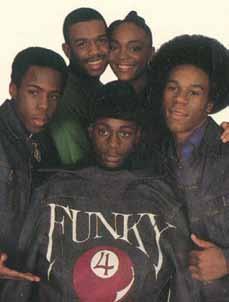
Disco). After a bit of to-ing and fro-ing (Rahiem swapping teams to join Grandmaster Flash and The Furious Five, Lil Rodney C and Jazzy Jeff joining, Sha Rock leaving and returning) they became The Funky Four Plus One. The group can claim a number of firsts including the first mixed gender DJ/MC crew, first hip-hop track released on Enjoy Records, first hiphop group to appear on national television on Saturday Night Live, at the invite of Debbie Harry. In a 1981 interview in the NME by Richard Grabel, the group neatly
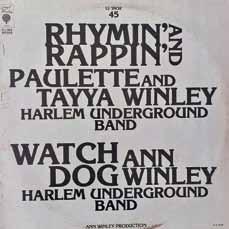
66
describes both the evolution of hip-hop as well as the birth of the The Funky Four Plus One More from their early breaker roots: Rodney: ‘That was before rapping started. It was BBoying, wild dancing, on the floor spinning around. The MCs, all they used to say was ‘B-boys, are you ready?’ and the B-boys would get down.
It’d be sides, like me and him would break against some others.’ Keith: ‘Same with the DJ battles; my equipment against his, my crew against his crew. It started in the parks. Everybody used to bring out their sets and play out.’ Keith: ‘It was DJs and Bboys. All the groups had MCs but the MC
wasn’t into rhyming or unity yet, they were just talking, like radio announcers. Then it got to a point where somebody started ‘Hip, hop, hip hipity hop’ and ‘To the beat y’all, freak freak y’all.’ And people started wanting to hear that.’ What records did you B-boy to? Keith: ‘Breaking records, fast records. Like James Brown ‘Sex Machine’, ‘Apache’ by the Incredible Bongo Band, Sly and the Family Stone ...’ Rodney: ‘Our group back then was the Brothers Disco. This is how we’d do our party: we’d play some freaky music, then a lot of B-boying. Then we’d play slow records. Then we’d tell them it was over and where we were gonna play next time.’ Rodney: ‘Then when we started hip hopping, we’d always use hit records. If a DJ played a record and everyone liked it, we’d make a routine off that record. At first the MCs didn’t do rhymes, just little sayings that the people started getting into. They started hearing it so much they started liking it. Then it got into long raps. First it was just one MC, then two. People used to think that five MCs would never work. We were the first group with five MCs.’ In 1979, The Funk Four Plus One More signed to Bobby Robinson’s Enjoy Records in Harlem, as did their main competition at Bronx hotspots like the T-Connection, the Back Door and the Spot - Grandmaster Flash and The Furious Five. The group released just one 12” single on Enjoy, the epic ‘Rap -

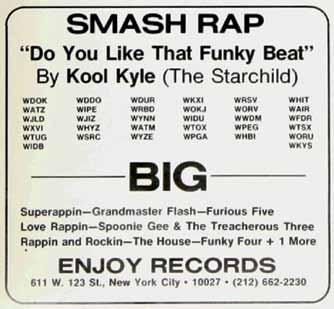
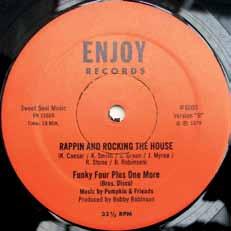
67
pin’ and Rockin’ The House’ (with music supplied by the Enjoy house band led by the genius young musical director Pumpkin). Both of Robinson’s first signings were leaders at the height of their game in this new genre and had learnt their craft from the bottom up. When the Sugar Hill Gang arrived overnight they upset the natural order of things and Sylvia and husband Joe Robinson, Sugarhill Records’ bosses, (and no relation to Bobby), quickly took advantage of the commercial success of ‘Rappers Delight,’ soon enticing both The Funky Four Plus One More and Grandmaster Flash and The Furious Five over to Sugarhill based in Englewood, New Jersey to build up their new rap empire. The Funky Four made three further singles (including ‘That’s the Joint’ also based on Cheryl Lynn’s ‘To Be Real’) before splitting up.
The year 1979 was certainly to prove an important one for Bobby Robinson who went from a record store owner with a dormant rhythm and blues label from the 1960s to the pioneering producer of a whole new musical genre with an unparalleled set of 12” singles which over
the following five years would include the debut releases of original artists such as Grandmaster Flash and The Furious Five, The Treacherous Three, Funky Four Plus One More, Spoonie Gee, the Disco Four and others. And while Robinson may not have had the business skills or financial weight behind him to hold on to most of his artist contracts, especially once the predatory Sugar Hill began searching around to add to their roster after the huge success of The Sugarhill Gang, his undoubted A&R skills enabled him to move faster than most and when hip-hop evolved in the early 80s, Robinson was able to diversify his catalogue with oneoff singles like the space boogie funk of female rap duo Silver Star, and similarly hip enough to catch the electro wave with seminal releases like The Packman’s ‘I’m The Packman’, although it has to be said he went out on a limb with The Disco Four’s ‘Country Rap and Rock’, a style that was never going to go far.
Another Enjoy signing was Kool Kyle The Starchild. Kyle was a teenager from the Bronx who, like many others, began as a b-boy alongside Grandmaster Flash, Kurtis Blow and many others before beco -

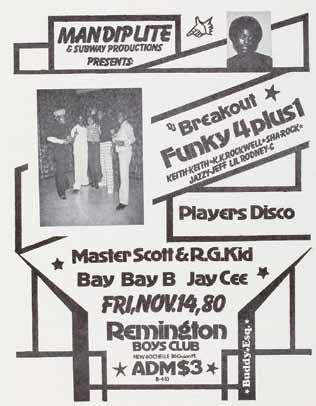
68
ming an MC after witnessing Starksi performing live at a Burger King in the Bronx! After the legendary DJ Hollywood invited Kyle to perform at Club 371 in 1977, he began regularly playing in parks with DJ Neil performing as Creation Disco Fantasy at the same time as Grandmaster Flash, Cold Crush and others, before becoming a regular at Bronx clubs such as Disco Fever and T-Connection. Kyle was a friend of Pumpkin, the multiinstrumentalist, in -
unlike most teenagers, their school also boasted its own record label! Challenger Records, named incidentally after the school sport’s team. Carver Area High School had already released one album, ‘Musically yours’ (1979), on a label called Mark Records, a longestablished record company that specialised in recording high school bands – madrigal singers, jazz bands, symphony bands. Carver High’s links with the Chicago music scene ran deep and on this first album we find

house drummer, arranger and producer at Enjoy and in 1979, Kyle recorded ‘Do you Like That Funky Beat?’ for the label (released the following year), making him the first solo MC from the Bronx to make it onto vinyl. The song is a re-playing of the funk group B.T. Express’s ‘Do you Like It’. In 1981, Kyle appears performing with DJ Sinbad in the underground movie Downtown 81, rapping over an instrumental version of Blondie’s ‘Rapture’. He is introduced in the preceding scene by no less than JeanMichel Basquiat, Fab Five Freddy and Lee Quinones graffitiing a wall outside the club where Kyle is performing. Jean-Michel Basquiat: ‘Who’s inside?’ Fab Five Freddy: ‘yeh, this DJ from the Bronx man’ Jean-Michel Basquiat: ‘Any good?’ Fab Five Freddy: ‘He’s serious man, you wanna check him out.’
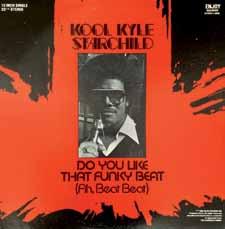
The George Washington Carver Area High School, nowadays known as the Carver Military Academy, is a public high school in Chicago, Illinois. In 1982, young students at the school were as excited about the current musical trend of the day as were the rest of their country. But
directing the band is drummer Curtis Prince (previously a member of the local rhythm and blues band Odell Brown and The Organisers who recorded for Chess/ Checker Records) as well as a special guest appearance by the legendary arranger Johnny Pate on piano. In 1982 the school created their own Challenger
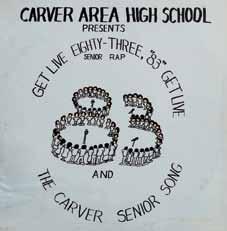
69
Records and the first release, The Carver Area High School Seniors ‘Get Live ’83 (The Senior Rap)’, has surely got to be the grooviest debut for any school band to make it onto vinyl ever! After introducing the song with a shout out to their music teacher and drummer, ‘Okay Mr Harris, hit it!’, a roll call of solo young MCs – including Magic C (‘dedicated, еducated, nominated, sophisticated’), Doctor Thomas, Slick Rick and Maura G – all make way for ‘whole class’ raps from Division One through to Seven with shouts on the way to teachers Lady T, Mr Whitfield and Mrs Warren and all the while keeping time to the Challenger beat: ‘Ms C.M. Warren don’t take no jive All we have to do is try our best And get As and Bs on our test’ The seniors of the Class of ’83 were soon to go out into the world on their own but Carver High continued under the direction of John Harris, Curtis Prince, Johnny Pate and Earl ‘Teddy’ Thomas releasing a further album ‘Dealin’ With It’ and two
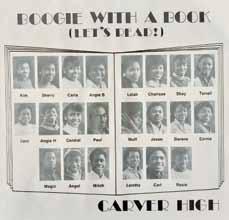
The yO ! Boombox sampler can be bought at Soul Jazz Records: www.souljazzrecords.co.uk

70
singles ‘Not Tonight’ and the lyrically socially conscious ‘Boogie with A Book (Let’s Read!)’.
YO! BOOMBOX
EARLY INDEPENDENT HIP HOP, ELECTRO AND DISCO RAP 1979-83
SJR LP530-7/LP530/CD530 Rel Date 19 May
Yo! Boombox is the new instalment of oul jazz recods’ Boombox seies on the ealy days of hip-hop on vinyl and featues some of the many innovative undegound fist-wave of ealy ap and disco ap ecods made in the in the peiod 1979-83. This new collection celebates these fist old-school ap ecods, binging togethe ae, classic and obscue tacks eleased in the ealy days of ap.

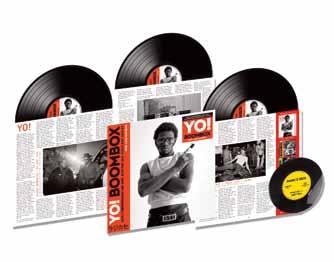
71 SOUL JAZZ RECORDS NEW RELEASE
SOUL JAZZ RECORDS .jrr..
WanDerinG in WonDerlanD
by GUIllaUME aK a wIlDST ylE GUy
« Ladies and gentlemen, there are 7 acknowledged wonders of the world. you are about to witness the 8th. Standing in the spotlight on showcase are 12 young men who have given you such tunes as The Grunt, Pass The Peas, Gimme Some More… Ladies and gentlemen, without no doubt, these are The J.B.’s ! »
Without no doubt, these are the words of Danny Ray, James Brown’s cape man and faithful sidekick. He met the Godfather of Soul at the Apollo in 1960 and toured with Mr. Dynamite ’til his death in 2006, even draped a cape over his open casket. World famous for the cape routine on Please Please Please and for his funky introductions live on stage, he used to be Soul Brother Number One’s valet before becoming his master of ceremony.
As Ray told The Augusta Chronicle in 2011: « The first time I ever did a live show, it scared me to death. It was up in Maryland. The guy who usually came out to do the show, he didn’t show up. So James asked me, ‘Have you ever been on stage ?’ I said, ‘Naw, man.’ He said, ‘Well, uh, tonight’s your night,’ I said, ‘What do you mean tonight’s my night?’
Next thing I know, he had me doing live albums for his stage show. »
Donny Ray was the second hardest working man in show business. Unfortunately in this wonderful world, history only remembers number ones. But we love beautiful losers. So as a tribute to this legendary MC who passed away in 2021, let’s review some of the musical wonders our world has to offer.
Wonder #1
Will never forget the only time my wife and I saw Gil Scott-Heron live in Brussels in May 2010. Can’t forget his voice, his tired and yet so powerful voice. Can’t forget his deadpan sense of humor, like when he explained he had been sampled multiple times but that never hurt.
Halfway between a concert and a stan -
dup. When I want to travel back to this night to remember, I listen to a live re -
cording dated July 2010 of We Almost Lost Detroit from Vienna’s Superfly radio station 98.3 FM. It’s an anonymous white label 7inch titled Smoab Session with just a hype sticker on cover. No credit no information, just the man, his voice and his Fender Rhodes. Gil was full of life, but a few months later he was gone. The video is also available on youTube, with one comment I’d like to quote: « How will we ever get over losing Gil Scott-Heron ? »

Wonder #2
Every now and then I hear Al Foster Band’s Night Of The Wolf and I think of Keb Darge. The Scottish DJ is the one who brought this record to my attention (not just mine) thanks to his selection for the 1999 comp Jazz Spectrum on BBE. I remember the first time I saw him in Belgium in 2005 with The New Mastersounds, I was hoping he’d play this banger… and right when I was in the men’s room he opened his set with this special one, I almost piss my pants rushing to dancefloor ! Immediately had to put my hands on the 7inch released in 1975 by Roulette. Later I found out that this was actually a re-release for the American market of a 1973
72

73
tune called Tema Del Lupo released by Italian musicians Ivano Alberto Fossati and Oscar Prudente on their Poco Prima Dell’Aurora LP. I remember when we used to start a cypher and how Keb would come and dance with us b-boys. These were the days of deep funk at Madame Jojo’s in London !
Wonder #3
How about a French cover of Funky 4 + 1 That’s The Joint ? Check King Size.B That’s The Joy ! Of course, not anyone can rap like Sha-Rock or KK Rockwell, so this version is not as fresh but still cute enough with its Frenglish touch. And it’s a good example of the many French translations of American or English standards. There’s
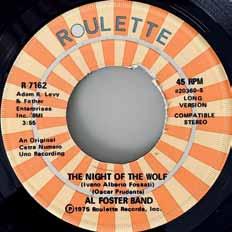
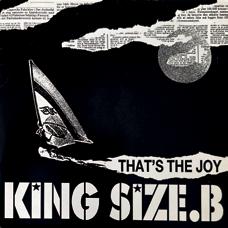
vorite song. But after all, That’s The Joint itself comes from A Taste Of Honey Rescue Me… so why not ? That’s what The Rolling Stones used to do. Covers usually can’t compete but sometimes it’s a welcomed breath of fresh air. For a soulful French cover that’s worth it, check Nino Ferrer’s 1966 version of James Brown It’s a Man’s World called Si Tu M’aimes Encore.
Wonder #4
Check the one dollar bin and you might find this Japanse 45 released by Toshiba Records in 1972: Koi No Tsuiseki (aka Love
no clue that this one is based on the 1980 crowd pleaser from Sugarhill records, you just don’t know until you listen and that’s a nice surprise. Besides, it’s dedicated to the Toulouse Breakers Street… never heard of ’em but it’s cool. Thank God most fans will never self-release a DyI version of their fa -
Chase) sung by Taiwanese pop singer Ouyang Fei Fei. And just when you start to think it’s pretty funky for a one dollar note, you notice there’s another version by Japanese singer Linda yamamoto also released in 1972… I’m lost in translation, which one is the original ? That’s one of those songs where I don’t understand the lyrics but I don’t care (just hope it doesn’t talk about my Mom). I guess this must have been quite popular back then as there’s (at least) a third version by Japanese drummer Jimmy Takeuchi. That’s the one for b-boys and b-girls… it’s a powerful instrumental take (forget the lyrics here) coming straight out the Love Chase LP from his Drum Drum Drum series, also released by Toshiba Records in 1972.

Wonder #5
I probably should pick a Stevie Wonder song but can’t go on without Quincy Jones. I remember seeing him in 2019 in Paris where he used to live in the late 50s, he had invited a whole bunch of friends on stage including jazz player Ibrahim Maalouf for a magical version of Human Nature. One of my favorite Q productions is called Midnight Soul Patrol, just the name
74
itself s awesome. A few years ago I found a nice alternative version of Dennis Coffey Theme From The Black Belt Jones called Theme From Black Belt by The Horton Band. Danny Hoctor was a professional tap dancer and dance teacher who had his own record label and his own band, specialized in cover versions (some cool some not so cool). The title Midnight Soul Patrol seemed interesting, and it sounded nice but not that nice… then I noticed the Quincy Jones credit.
So I listened to Q’s original version that’s available on his 1976 LP I Heard That !! and oh I did hear that !! Incredible dream team right here: Quincy himself on ARP String Ensemble, Dave Grusin on Moog synth, George Duke on Fender Rhodes and Moog synth, Louis Johnson (from Brothers Johnson) on guitar and Fender bass, Stanley Clarke on piccolo bass, Alphonso Johnson on fretless bass, Billy Cobham on drums and synth drums, Snooky young on trumpet, Jerome Richardson on flute, Jerry Hey on trumpet, Bruce Howler on trombone, Larry Williams on tenor sax and Kim Hutchcroft on baritone sax… to be complete !
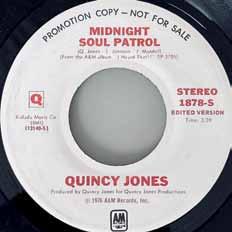
Wonder #6
Now if we talk about Quincy Jones we might as well talk about his friend Michel Legrand, world famous conductor, composer and jazz pianist. In Paris they were both students of Nadia Boulanger who had conducted the London, Boston and New york orchestras and was considered as the greatest music teacher in the world. The movie theme Le Messager aka The Go Between was released in 1972. It came back to light in 2001 when it was sampled by RJD2 for Shot In The Dark

on his first LP Deadringer. But in France, it’s well known since the year 2000 for being the end theme for a crime TV show called Faites Entrer L’accusé that is still aired today (the whole soundtrack created by Raphaël Tidas & JeanMarie Leau is great and probably helped success). It’s such a melancholic and mysterious theme… and yet it’s so funky it hurts. Hats off to you Monsieur Legrand.
Wonder #7
I don’t know much about James Cobbin & Prime Cut. Their only release is dated 1984 on Tuckwood Records from Hollywood California, a shortlived record company that also signed Mr. DJ by The Concept in 1985.
Caught In The Middle on side A is a catchy tune (would deserve a remix imho) but what you really want, is the B side that’s only available on this 7inch record with reference TW-101: It’s Music. James Cobbin will probably only be remembered for this record, but that’s already
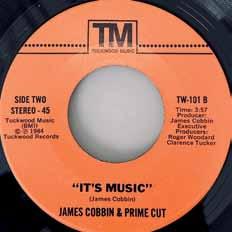
75
75
a lot. I discovered this boogie gem in 2013 thanks to French DJ and producer Breakbot from EdBanger Records, through his funky mixtape Blue Wheels Journey. Merci beaucoup. Now 7 wonders is not enough, I’d be more comfortable with 7,000 memories to share. But hey 7 wonders x 7 inches = 49… and that’s the age of hip-hop culture today. As a matter of fact hip-hop will celebrate its 50h anniversary in a few days (me too by the way) so hip-hop hooray on August 11th !
Wonder #8
And last but not least, the 8th wonder of the world. As summarized by Wikipedia: « The J.B.’s were formed in March 1970 after most of the members of Brown’s previous band walked out on him over a pay dispute. (…) The initial lineup included bassist Boosty Collins and his brother guitarist Catfish Collins, Bobby Byrd (founding member of The Famous Flames), drummer Jabo Starks (…) The version of the J.B.’s played on some of James Brown’s most intense funk recordings, including Sex Machine, Super Bad, Soul Power, Talkin’ Loud… They also accompanied Brown on a European tour (during which they recorded the long-delayed live album Love Power Peace), performed on the Sex Machine double LP, and released two instrumental singles the much sampled The Grunt and These Are the J.B.’s (…) In December 1970, trombonist Fred Wesley rejoined James Brown’s organization to lead the J.B.’s. Other former Brown sidemen, including Ma -
in 1975. Brown continued to bill his backing band as the J.B.’s into the mid-1980s, when he changed their name to the Soul Generals, or Soul G’s. »
James Brown had many hits and many names, and so did his entourage. The J.B.’s also went by the names The new J.B.’s, Fred Wesley & The J.B.’s, The James Brown Soul Train, The Hustlers, The Sons of Funk… etc. but my favorite is A.A.B.B. meaning Above Average Black Band. Cause the band was definitely above the average backing band with its talent factory and its heavily-sampled catalogue on King Records and People. Even Danny Ray’s rhymes were sampled by the hip-hop generation (Arrested Development, Jungle Brothers…). Its unique release Pick Up The Pieces One By One is James Brown’s answer to Average White Band’s Pick Up The Pieces that reached no.1 in 1975 with its bass line supposedly borrowed from Hot Pants Road.

I was too young to see The J.B.’s live at their top. I did see later some of them on stage like Maceo Parker or Fred Wesley. Even saw James Brown once, in Brussels in 1995, in a huge (and free) outdoor festival. Probably not the best time nor the best place… I was too far to really enjoy. I slept on many further occasions but in summer 2006 I was supposed to catch up in Brussels, but then I thought I’d wait for a better venue… and so I missed my last chance as by Christmas the Minister of New New Super Heavy Funk was gone. Luckily his famous flame is eternal, go online watch The J.B.’s live performance recorded in Rome on April 24, 1971 for the Italian TV… 15 minutes of goosebumps ! Of course the final lines are from and for Mr. Danny Ray himself, just let the words flow and feel the funk: « Right about now, it’s star time ! Are you ready for star time ? yes ! Introducing, ladies and gentlemen, the man who has given the world over 44 golden soul classics, tunes that will never die. Tunes like Try Me, Please Please Please, I Feel Good, Papa’s Got A Brand New Bag, Sex Machine, Big Payback, Get Up Offa That Thang, Don’t Be A Dropout and Say It Loud, I’m Black And I’m Proud ! I introduce you to the hardest-working man in show biz, ladies and gentlemen, the Godfather of Soul, Mr. James Brown ! »
ceo Parker and St-Clair Pinckney, eventually followed his lead, while the Collins brothers and most of the rest of the “original” J.B.’s left Brown to join George Clinton’s Parliament / Funkadelic collective. Wesley and Parker left
Guillaume aka Wildstyle Guy IG : wildstyleguy_collection
76 76

a BaD pic Ture
by DUTCH GR aFFITI lIBR aRy

Graffiti is direct, dynamic and the expression of a subculture whose output is transient by definition and changes the streetscape. Photography played an important role in the development of documentation on graffiti culture. While legendary photographer Martha Cooper was one of the world’s best graffiti photographers in the 1970s and 1980s, teenagers also took to the streets in the 1980s and 1990s to capture their own culture. They did not create photographic gems but amateur photos taken with cheap cameras or other analogue device with a film of 12, 24 or 36 exposures that could not be developed until later. And then, after picking them up at the local photo lab, they often turned out to be overexposed, blurred or out of focus.
Now, almost 25 years later, it is these bad pictures in particular that prove to be very valuable, because they show
something that doesn’t exist anymore and provide a nice portrait of the early years of graffiti in the Netherlands. They show how the graffiti community documented its own expressions with the limitations of the materials available at the time and complete the stories and memories from the Dutch graffiti scene from the 1980s and 1990s, focusing on the creation process and the experiences in capturing graffiti. All ‘bad pictures’ are from the collection of the Dutch Graffiti Library and the original negatives have been preserved. ‘I only have a bad picture’ says a lot about the transience of graffiti and how the community documented its own heritage in photographs (and how this went wrong every once in a while).
This article is made in relation to the exhibition “I ONLy HAVE A BAD PICTURE”, which can be visited from June 1, 2023 in Montana Shop Amsterdam at 138 Sint Antoniesbreestraat.
i only Have
78

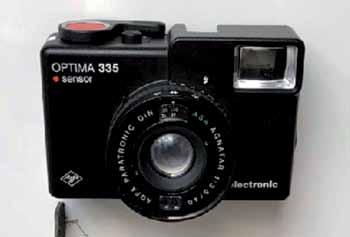
79 79
The graffiti community documented its own expressions with the limitations of the materials available at the time.

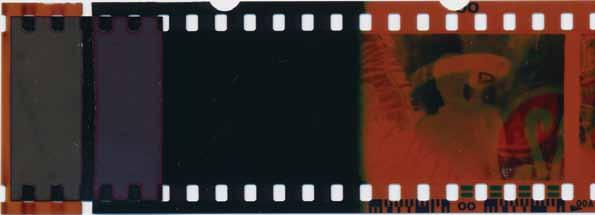
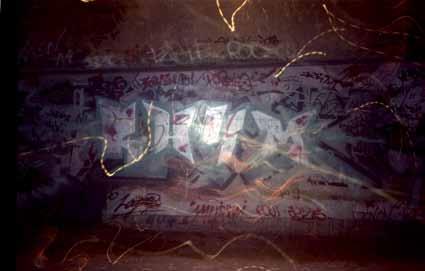
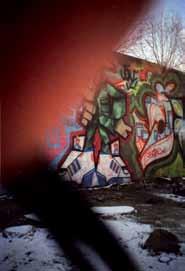
80

TWo
sis
Ters B-Boys BeWare by discopatrick
Interview by Mick Sinclair UK SOUNDS magazine 14 april 1984
talk about d estiny !
Just days after first coating my aural receptales with the choice tones of the Two Sisters album (put out by Importe /12 in the United States released by Streetwave here) I chanced to be on a plane to new york, just hapening to touch down a couple of days prior to the aforementioned duo’s first ever NyC appearance.
The event was a thrill packed soiree in the environs of the fabled Funhouse, the legendary jellybean operating ax from the booth while 3000 or so young (very young, from about age 12 upwards, astonishing when you consider a lot of them come from the poorest parts of town and the Funhouse door demands a cool 12 dollar entrance fee). New york breakdancers on the floor. By now they’re oblivious to the gaze of the urban anthropologists stalking the sidelines with notebooks.
‘Supporting’ the Two Sisters was a mysterious fire-eating semi-stripper, further warming the already hot patrons for on-stage activity.
The Funhouse boards are actually in the centre of the room and as Two Sisters time approaches, each side gets hemmed in by expectant mobs. A sign of their popularity and also the attention that such a place pays to its artists. No Camden Palace blase here! They perform to a taped backing although the occasion is made emotionally forceful by their presence. A captivating mix of gestures that point to showbiz brassiness are ridded of cliche by both the Sisters’ own aura of innocence and their simple lack of experience. Namely, the Two Sisters are Theresa Pesco and Tracey Houghton, from Greenwich Village and the Bronx respectively. Beyond that I’m ignorant but crazily curious. So i ventured backstage….
Tell me, what kind of people are you ?
tracey: “We’re very nice people, contrary
to he album cover. Oh you haven’t seen it !” Streetwave’s version comes in a plain bag “Well, remeber us when you do. We’re pictured as TOUGH, really strong women.”The pair earlier done some singing together but the Two Sisters idea was hatched a year and a half or so back when we were introduced to producer Raul Rodrigez.
t heresa: “We had never recorded anything on vinyl but Raul had just finished working on Man parish, that ‘Hip Hop Bebop’ thing, and he wanted to produce a female rap band. That’s when we did ‘High Noon” and it was released last April or may. Then we did the seven or eight cuts which are on the album. It’s not all street.”
Both are quick to declare that Two Sisters are more than just a jokey affair ,limited to creating antimacho rap discs. Even if the most blatant example, ‘BBoys Beware’, was a big hit in Holland and Germany from where the Two have just returned following a stint of TV appearances. That success is a little surprising, perhaps?
tracey: “ I would say not because ‘BBoys Beware’ is really a novelty record. Raul had the idea, having heavy rapping women doing that kind of thing - and, of course, the whole concept.
Having Two Sisters who aren’t two sisters,” (next question nixed !) “but who get along very well and can get out there and do it,”
t heresa : “ I think for the audiences in Europe it’s really something different and really new. It doesn’t originate there. In America it’s a little harder to get people going because it’s home. you have to be really on top here. Really sharp and creative or else, and people don’t want that because it’s just like looking at themselves or the guy next door. “ The concept for Two Sisters was like, y’know rapping men
VIntaGE aRtIclE
82
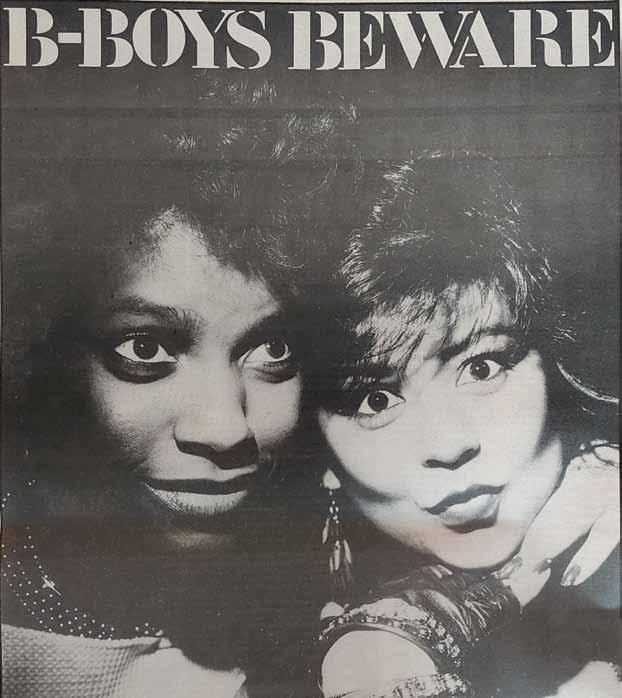
83
tracey (left) and theresa
have been calling each other brother for years. So it was the same idea, two people of common background, common goals, common ideals.”
Some might still say that the group is a creation of Raul’s and you’re the performance puppets on the end of his production strings. How involved are you in the crative side ?
t heresa: “How Envolved ? Fully and completely. I’m saturated totally all the time (not a person givin to subdued turns of phrase is Theresa ! She later apologises for ‘running on at the mouth’). I hate not to be involved. I co-wrote ‘Destiny”with Raul. I really want to take an active part in the writing of the material and saying what it is that we have to say. It’s kind of hard when you work with the number of people that we work with. It’s becomes inevitable that everyone’s climbing on top of each other and getting on each other’s nerves. “We spend hours in the studio just sitting there when things are being done. But it is important to be sitting there the whole time”.
Most recently the pair have been soaking up the sun down in Florida (Ny was freeezing !). Where Destiny was a sizable success.
t heresa: They Love it. ‘B-Boys Beware’ did quite well too and i guess a lot of kids really liked “High Noon”. It’s hard to tell when you’re so involved with doing the business of the show.”
Destiny is a scorching sensurround love song, several steps removed from the rapping assertions of ‘B-Boys Beware”.
t heresa: yeah ‘Destiny’ is really an uptempo dance tune. It’s really a much more appealing song. It reaches a wider and broader scope of people, if you listen tot he lyrics and hear the message of the song. “For instance ‘B-Boys Beware’ is directed directly at B-Boys and not everyone in the world is a B-Boy. There are just a small amount of men who are into that. ‘Destiny’ is a love song, it’s about broken hearts and destiny. That and fate affects everyone. There are more people out there with broken hearts then there are B-Boys i think.
“So ‘Destiny’ is a good ‘indication of future Two Sisters output?
tracey: “Oh yeah, I don’t know if we’ll be doing that many more rap songs. That was very important in terms of having a different idea. It’s okay having a novelty but you have to develop and grow as well.”
t heresa: “I’m like, er, going to get philosophical and metaphysical here,” (a space is eagerly cleared) “but the wagon’s gone by and basically it’s been male groups doing a grab it while you can thing. We’ve just shown that we can do it too. It’s not that hard. But it’s not a means to an end. It’s just a beginning, you know. “I think we’ll be doing more funk, more r’n’b, more pop. We’d like to develop and I think the whole movement now is developing. It was cult for a while but it isn’t anymore. you can’t stay in the same place and stagnate. “Raul and I are going to collaborate a lot more. A cut on the album is called ‘Right There’ and it’s a love song, the most r’n‘b of all our songs and I think it’s great. That’s really the line we might be pursuing in the future, there is only so much you can do with the other type of music. I wanna be ambitious ... I wanna ... “
As she is prone. Theresa gets carried along on a tidal wave of emotional gushing. The relatively prosaic Tracey sits it through. As they point out, the ‘movement’ is moving on. Even the Funhouse itself seems more part of the past than part of the future. I ask Tracey if this is the place she’d come to for entertainment. “ Hell no,” she bellows, most shocked.
“This is the last place – all that thump thump thump, night after night, it can’t do your ears any good. I usually stay at home, reading and designing. “ Streetwave meanwhile, besides the LP, have made available a single of ‘Destiny’ backed with ‘B-Boys Beware’. A good starting point for intrigued record buyers. But will the Sisters be gracing our shores?
t heresa: “I would really love to go to England. I want to very badly.”
tracey: “But we’ ll wait till we’re invited.”
Theresa : “I think if we did, the show would be a little more developed than tonight. It was real loose and everybody was having fun which is important but. ..Maybe I’ll dye my hair red ...”
84
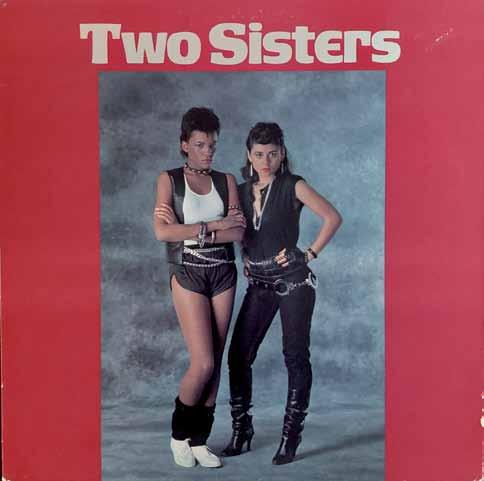
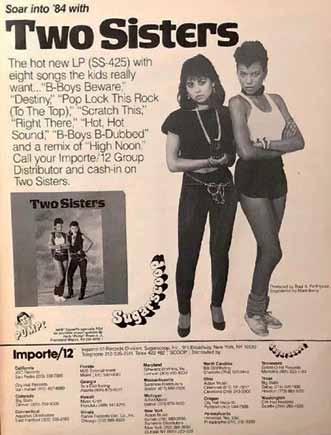
85
cOVER aRt
Shusei Nagaoka was a Japanese illustrator. He is best known for his music album cover art in the 1970s and 1980s. Artists for whom he illustrated covers include Electric Light Orchestra, Earth, Wind & Fire, Space, Maze, George Clinton, Kitaro, Rose Royce, Caldera and many more. He assisted in the designing of the 1970
Osaka Expo, and was selected as one of the most significant artists in 200 years of American Illustration. He received several awards, along with platinum and gold albums, in recognition of his work. Several books of his artwork have been published.
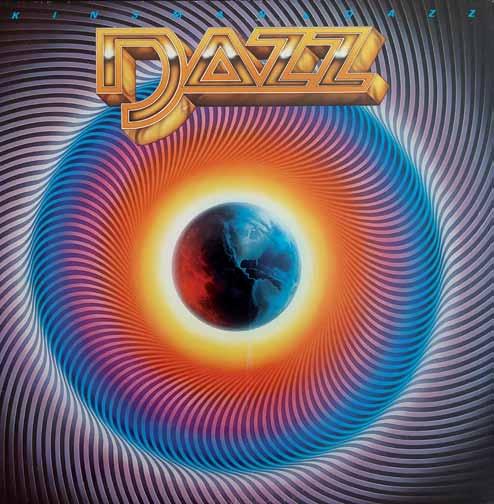
sH usei naGaoka
86
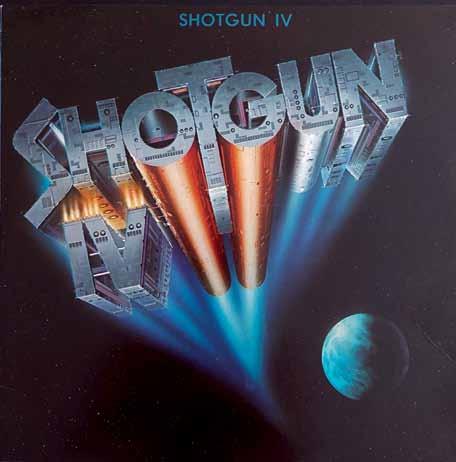

87
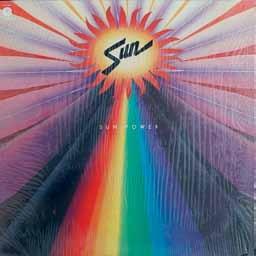

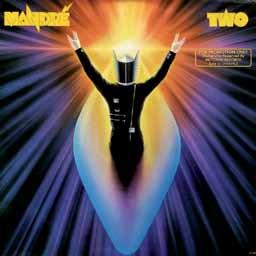
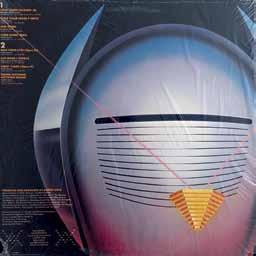
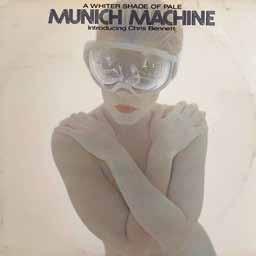

88
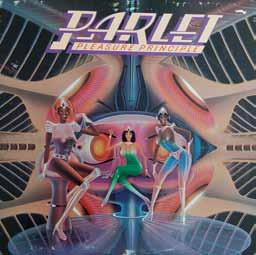
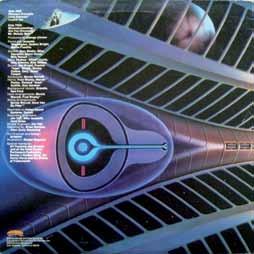

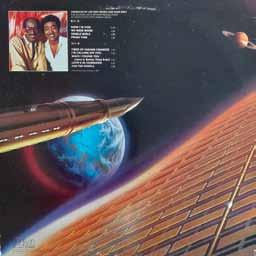

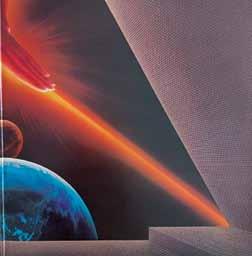
89


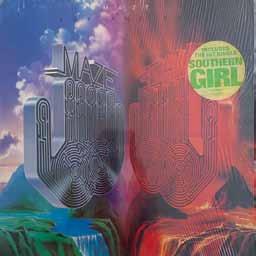
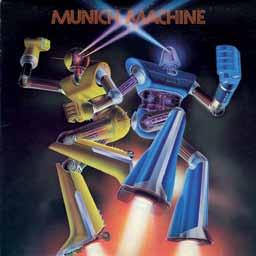

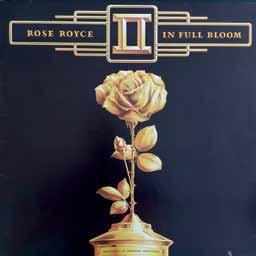
90

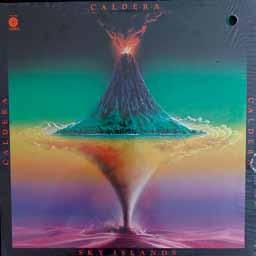
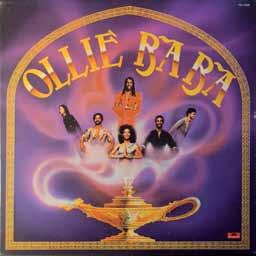


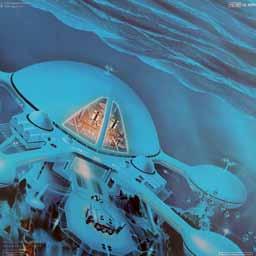
91
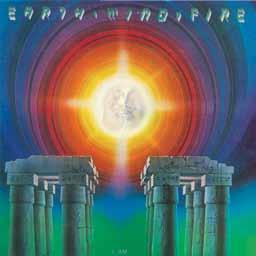
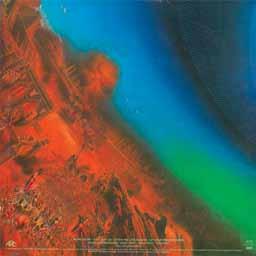

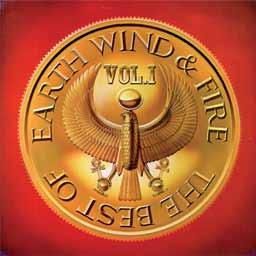


92
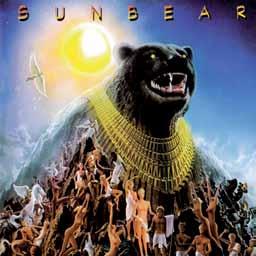
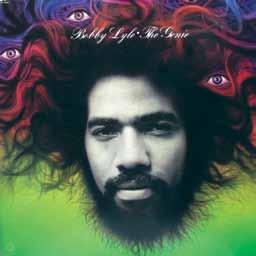



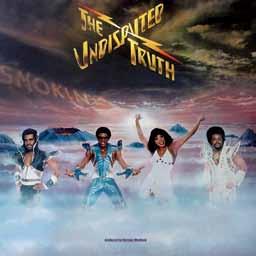
93
Gayle aDams
pRElUDE pREss KIt
Gayle Adams is a singer who refuses to be labeled. Her lovely voice instantly engages the listener, whether she is doing a sensitive ballad, or a pulsating dance number that rocks the roof right off its hinges. As Hugh Wyatt, music critic for the New york Daily News aptly noted, “ Gayle is a dynamo ….she is superb. “ A year and a half ago, Gayle’s debut album GAyLE ADAMS (Prelude Records) caught the attention of music lovers and the press across the country. Her vocal style is deeply rooted rooted in rhythm and blues gospel music. Both Gayle’s mother and several of her aunts were gospel singers. Consequently, she spent many childhood hours at church (in Washington, D.C) hearing the sounds that later were to influence her own singing. One of Gayle’s aunts, Ann Munson, is a gospel recording artist. It was she who inspired Gayle to seek a career as a performer. In addition, Gayle lists Aretha Franklin, Dionne Warwick and
Nancy Willson as her favorite female artists.
When she was a small girl, Gayle had several dreams. One was to become a professinal race car driver; another was to be a comedienne. A third was to become a modeI; and of course, there was music. When she tried modeling, Gayle discovered that it was too constricting for her cut-up personality.
“I was very funny in school”, she says. “People were always saying how witty I was. With my love of music, I eventually realized that singing was my true calling-a way to allow the serious artist and the comic to co-exisL”
Gayle’s second album, LOVE FEVER (February 1982) follows the chart-busting single by the same name. LOVE FEVER. For this collection, Gayle has again worked with producers Willie Lester and Rodney Brown. She is quite pleased with the collaboration.

94
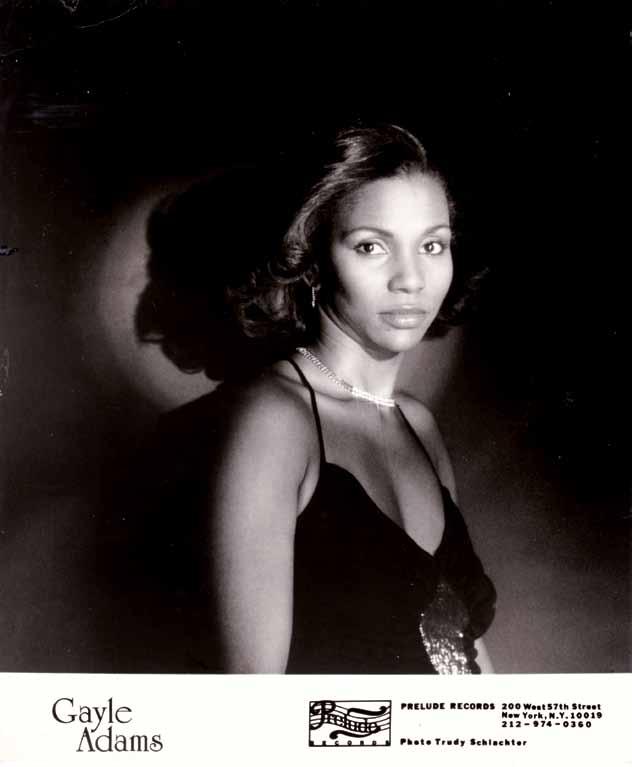
95
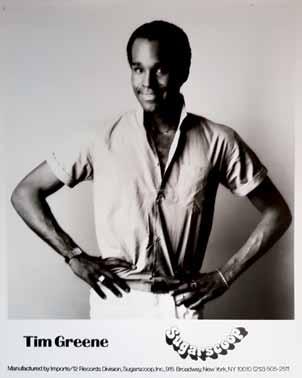
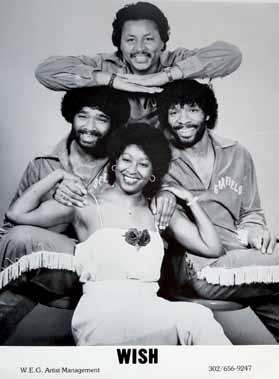
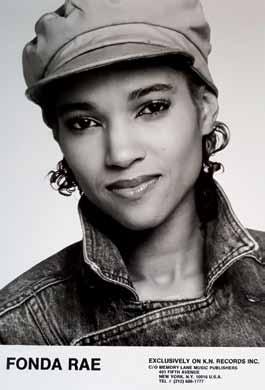
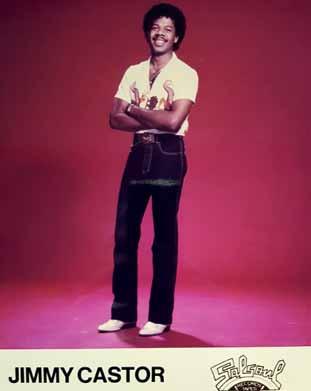
press k iT pic Tures 96


97
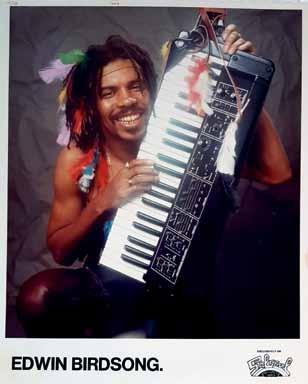

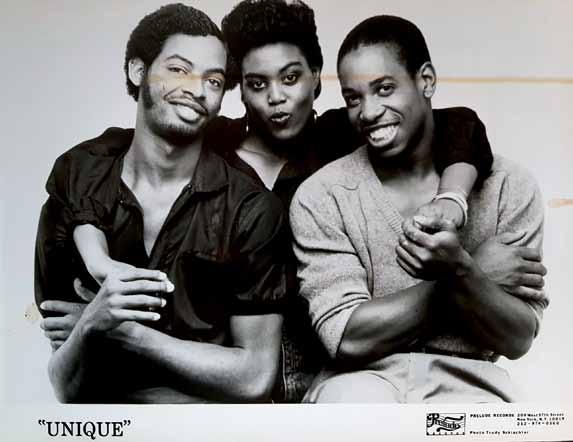
98
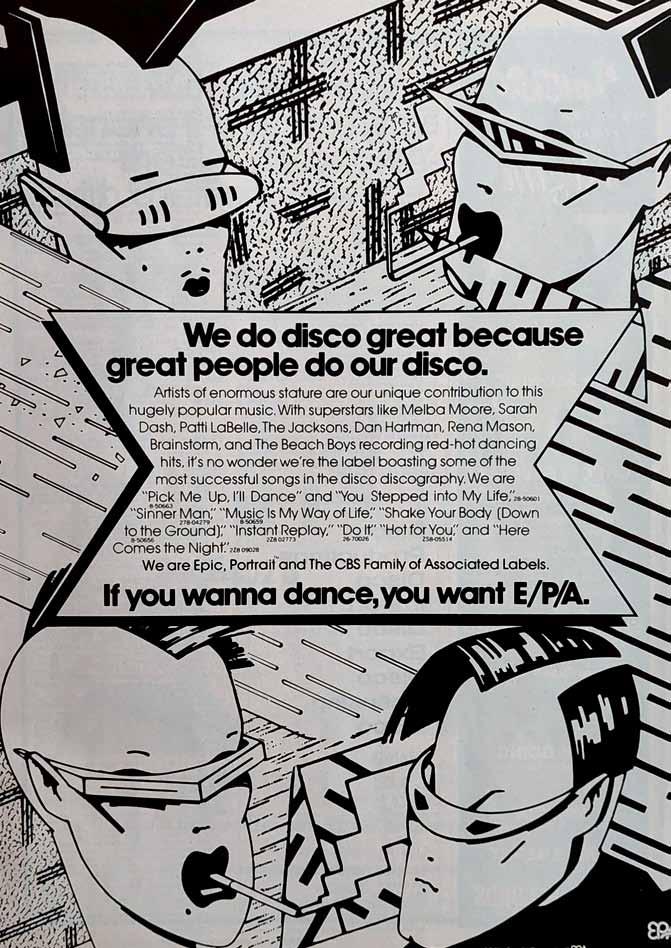
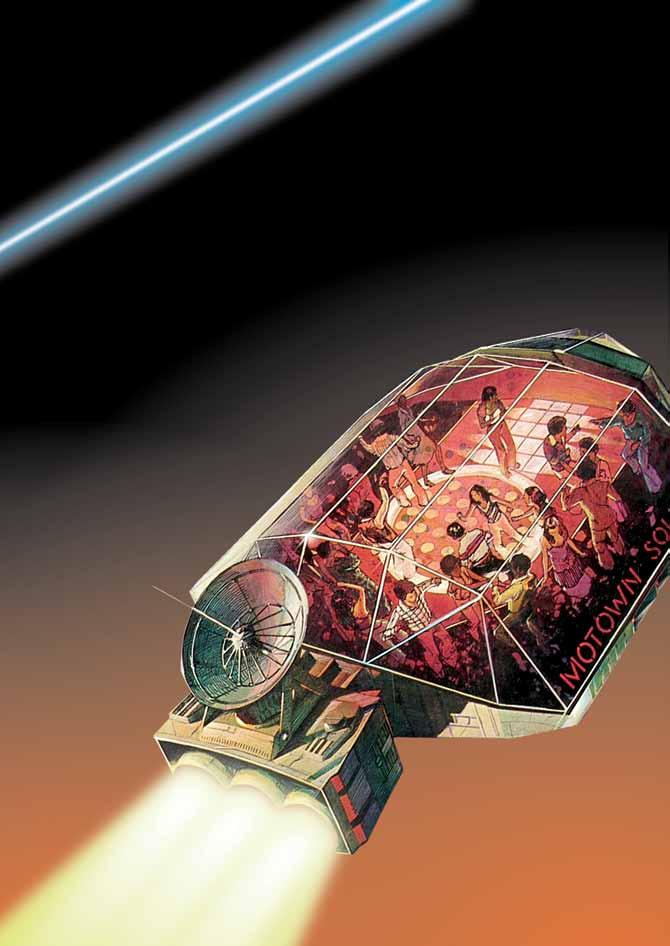

























 trouble Funk
trouble Funk


















 Chuck Brown’s Run Joe ,
Remote Control’s E-Z Street
Chuck Brown’s Run Joe ,
Remote Control’s E-Z Street





































































































































































































